






For most university students, the end of Easter recess also means the end of nights at the Strip, skipping classes on a whim and taking bi-weekly naps on the Aula grass. With tests and assignments every week, extracurricular responsibilities and exams approaching like a train, Quarter 2 is no joke. And, like that one couple that is a little too comfortable with PDA, an endless workload always seems to go hand in hand with toxic productivity.
Unfortunately, as students, it may be hard to recognise the signs of toxic productivity. Pulling all-nighters in the study centre, giving up your social life completely to keep up with assessments, and thinking about your work during all hours of the day may feel like necessary and even normal parts of student life. On top of this, dedicating yourself completely to your studies is often seen as something admirable and worth striving for. That is perhaps why so many people wear the bags under their eyes with a sense of pride, casually mention that they had seven cups of coffee and three monsters yesterday, or speak boastfully about how little sleep they get (“I actually only sleep three hours a night, you know. Yeah, I’m up at 4 every morning studying…).
But at what point does this go too far? Is it when you skip meals to stay with your books? Is it when taking a shower feels like an excessive waste of time? Is it when you are putting your health in danger because your schedule simply does not allow for any time to – oh, I don’t know – get a decent night’s sleep, take your meds, or literally just feel like a human being?
Here is a crazy thought: perhaps your sense of productivity is not tied to your value as a person. (I know, groundbreaking, eh?) True as that notion may be, it is not actually realistic life advice for many students. While lecturers may include a little blurb about mental health in their emails, they will still cram a month’s worth of work into a week. While it may not be healthy to regularly use Monster Mucho Locos as a substitute for sleep, it may also be the difference between a pass and a fail. Taking a five-minute walk can seem extremely selfish when you feel like it could cost you your entire degree.
PDBY asked students to share some of the craziest things they have done in the name of productivity. These were some of their responses:
“[I mixed] instant coffee and Monster, then asked my sister to take my phone and lock me in my room.”
“[I just] pumped myself with caffeine. Like maybe 10 tablespoons of coffee… Evidently, I lived and, surprisingly, it did nothing.”
“Taking Concerta and Redbull, and pulling allnighters every night.”
“[I took] two 5-hour energy packets, had a cup of coffee and worked on an assignment until it was 3 am and I was delirious and shaking in a foetal position on the ground.”
This doesn’t mean that nothing can be done, though, and I’m not just saying that because this editorial was starting to feel very glass-halfempty. So here are some practical tips to combat that little toxically productive devil on your shoulder:
Acknowledge that it sucks. It’s okay for you to admit that you are struggling and to seek support from friends, family or mental health professionals.
It’s only temporary. As challenging as university may feel at times, it is only a few years of your life. That dreaded test or exam will be over in no time, you will finish your dissertation, and you will be debating what colour dress to pair with your Orange Humanities sash for graduation before you know it.
Combine your social life with your studies If you absolutely cannot get over the guilt of not doing work so you can go out with your friends, see if you can’t combine the two. Create or join study groups, work in discussion rooms, find an accountability partner or arrange some work and study dates with your besties. Social interaction is an essential part of mental wellbeing, and working with other people can help keep you both sane and accountable.
Let yourself be useless. Sometimes trying to power through exhaustion isn’t such a great idea. At that point in the day where sentences stop sentencing and journal articles start feeling more like personal attacks – take a break! Getting yourself a coffee, taking a nap or going for a quick walk may actually make you much more productive and absorbent afterwards.
Plan ahead of time and avoid procrastination. Yeah yeah, I know, I know, but this advice is generic for good reason! You probably should not be virtually indistinguishable from Gollum, clutching your 10th cup of coffee for the day at 03:30 in the morning, desperately trying to finish the assignment you’ve had for two months (well, at least not every week). Creating a timetable and sticking to it, getting started long before your work is due and keeping on top of your admin can actually save you a lot of time (and sanity) in the long run.
A change is as good as a rest. Sometimes, your workload may be of such a nature that taking a break is simply not an option. When this is the case, a change of scenery may be enough to keep you going. Try leaving the mouldinfested, hot breath receptacle, 1980s liminal space (also known as the Merensky Library) and work in your favourite coffee shop for a spell. Even just moving outside or to a different room in your house may be enough. There are plenty of different spots on campus that are great for getting work done, no matter your preference. This excludes the Law Library, though. GET THE FLIP OFF OF MY LAWN YOU DARNED EBIT STUDENTS!!!




On 1 April, the legendary game of TuksVivor drew to a close. The third annual event reached new heights, featuring increased prize money and providing live and real-time footage to appeal to the broader community. A further incentive for the public is that TuksVivor is hosted by Chappies, a two-time contender of Survivor South Africa and a former UP and Morula Legae student. The competition took place from 27 March to 1 April, and the contestants took part in a competition that looked much like the original Survivor but condensed into six days consisting of tribes, numerous challenges and tribal councils.
Twenty-four contestants were selected to compete from submitted applications. Lanché van Tonder, the TuksRes manager of Residence Management and Student Life, explained the application process, “The TuksVivor team considers all applications and then, between a group of 12 people, decide who would provide the most entertainment over the six days.” The contestants then competed in the game at the Intundla Game Lodge and Bush Spa, where they were divided into three tribes: Whanau, Ignis, and Morehu. Within these tribes, the competitors took part in numerous challenges and voted members out in the tribal councils. The remaining members eventually merged into one tribe and continued until the final, in which three contestants remained.
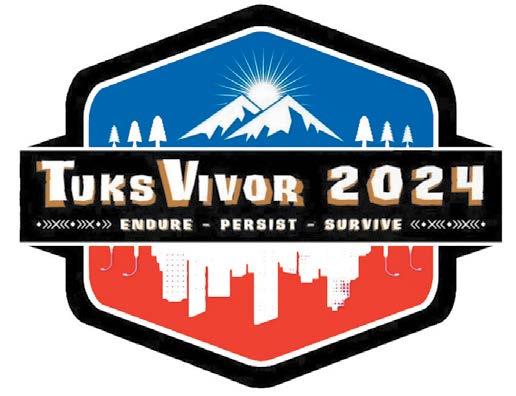
This year, the three contestants that made the final tribal council were Njabulo Liseko (Tuks Ekhaya), Anri van Dyk (Vividus Day House), and Kyle White (Tuks Ekhaya). The results of TuksVivor, much like Survivor SA, are decided
by a jury of previous contestants. The jury can ask a contestant one question or make one statement to decide who they should vote for as the winner of TuksVivor. This resulted in Kyle receiving five of the eight votes, making him the winner of TuksVivor 2024 and the recipient of the R16 000 prize. Anri was the runner up with two votes and won the prize of R8 000.
Finally, Njabulo walked away with the third prize and was also voted Fan Favourite by the audience.
When asked about how they found the experience, Kyle said, “It’s something I will cherish for the rest of my life, and I made memories and lots of great friends.” However,
he commented that it is tough because the condensed nature of the game “heightens the experience’’. Anri shared Kyle’s sentiments, as “it was wonderful’’ but “the day [they] had four challenges was the worst’’. This event enhances not only student life but also the students’ personal growth, as it is difficult and entails hard work to compete. This was demonstrated in the final by the emotional nature of the jury’s questions and statements directed toward the contestants.
Although Njabulo was the fan favourite, there were a few on the jury that expressed negativity toward how he had played the game. Chappies commented that the audience votes for their favourite “without all the emotions, pure game”. This indicated how emotionally strenuous the game was for all that competed but also that the experience, above all, was enjoyed. When asked what the aim of the event was, Van Tonder stated that “the impact the experience has on participants is inexplicable’’.
The sponsors who made the event possible were TuksRes, Tomato, Reebok, AJR Audio, and Intundla Game Lodge and Bush Spa. Redgreenblue Creative was in charge of production, following all the action and allowing the audience to watch it live and in real time. The contestants each received gifts that consisted of a watch and backpack from Tomato (and a reversible hat for the winner) and Reebok fragrance. The entire show was live-streamed and is available on the TuksVivor Youtube channel.
From 4 to 14 March, UP societies took to the piazza as part of the Societies Marketing Week. The week was an opportunity for the diverse societies to put themselves on display for the wider student body. This provided a window into the lifestyle and community of UP societies and created a platform for the societies to grow and improve their membership numbers.
The piazza was adorned with societies from several backgrounds – political, sporting, social, religious, academic, and cultural – displaying the diverse student interests within the university. The SRC societies officer, Sicelo Ngwenya, explained that the aim of the event was to help “students to find a society that speaks to them”, as “a society is a special interest group”. “As an individual, you are not just here to work and study, you need a social outlet.” This is a sentiment that many students agree with: 12 954 students took the opportunity to join at least one of the 134 registered student societies available at Tuks during Society Marketing Week alone.
The social element of a
society is undeniable, for each society drew curious onlookers into its stalls. Among others, Ahitivaneni Vatsonga vaTuks was pumping vibrant music, the Tuks Gaming Society was rolling the dice with Catan or Dungeons & Dragons, and the Culture Shifting Society gave budding students a chance to dunk on the
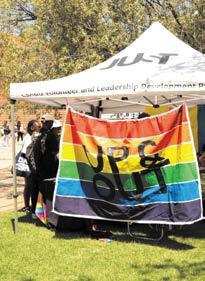
basketball court. This created an environment that showed students the active community present in societies, making it difficult for the casual student observer to simply wander by.
Zanele Ndlala of the Culture Shifting Society encourages students to join a society, “UP has a
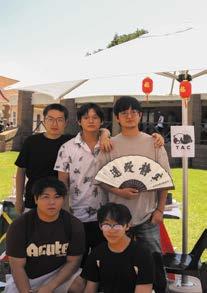
lot of societies; your niche is there.” Societies are a place to meet like-minded individuals, grow your network and destress from the rigours of university life. What is there not to love? Many of UP societies are active on social media and can be found participating in on-campus activities throughout the year.
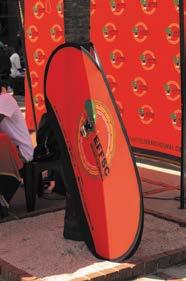
Aleksa
KrugerOn 3 March, CNN correspondents Manveena Suri, Lucas Lillieholm, and Yoonjung Seo wrote an article that delved into the protests staged by South Korean doctors. These protests were a direct response to the government’s plans to increase medical school admissions, a move they perceived as a broader lack of support for the country’s medical system. The gravity of these protests cannot be overstated, as they shed light on the challenges faced by medical professionals in South Korea and, when compared, South Africa.
Recent protests in South Korea have brought the challenges medical students face to the forefront. The South Korean education system is renowned for its intensity and emphasis on academic achievement. High parental and societal expectations as well as intense academic pressure drive many students to pursue medical
careers. The stringent admission process for medical schools in South Korea adds to the stress, as students are required to excel in highly competitive entrance exams.
On the flipside, South Africa grapples with its own complexities, including historical inequalities and resource limitations. As a result, South African students are compelled to navigate a system in which increasingly limited spots are available in medical programs, making the competition fierce. Furthermore, socioeconomic factors such as access to quality education and financial constraints pose additional hurdles for aspiring medical students. However, the common thread between the two nations lies in the immense pressure faced by students aspiring to enter the medical profession.

Despite the differences in their education systems and societal contexts, South Korea and South Africa share a joint commitment: addressing the challenges in their respective medical education landscapes. Initiatives to support aspiring medical students, to increase access to quality education, and to improve healthcare infrastructure are crucial steps towards ensuring a sustainable and inclusive healthcare workforce in both countries.
Studying healthcare is a challenge and a global issue. Whether in South Korea or South Africa, the pressures faced by those in the education system are immense. Therefore, significant measures have proven necessary to combat this rising problem. And as discussions around medical education continue to evolve, it is essential to consider the broader implications for the well-being of students, the future of healthcare, and society’s overall health.
On 21 February, among the plethora of emails that students received, there was one regarding the transformation of Faculty Student Advisors (FSAs) to Academic Success Coaches (ASCs). This shift marks a strategic move that aims to enhance the support system for students navigating their academic journeys. In an interview with PDBY, the coordinator of FLY@UP, Tayla Jonker, shed light on the reason behind the change and the comprehensive initiatives that are available to students.
Regarding her role at FLY@UP, Jonker outlined her responsibilities in coordinating various programmes under the FLY@UP umbrella, which emphasised the evolution of support services beyond academics. She highlighted the collaboration with ASCs (formerly FSAs), who played a vital role in providing personalised guidance to students across different faculties.
Jonker likened the rebranding of FSAs as ASCs to going shopping and buying the product you know and love, simply in new packaging. It has the same essence but a clearer identity. She clarified that the Faculty Student Administration had also been referred to as FSA, and thus, the change was made in hopes of mitigating confusion amongst students. The term “Academic Success Coach” aligns the terminology with a more recognisable concept: coaching. By framing support within the context of coaching, the university aims to make the process easier and to encourage students to proactively seek assistance.
In addressing the reluctance of students to seek help, Jonker attributed it to the overwhelming amount of information that students, particularly Generation Z, tend to take in daily. With the constant consumption of information online as well as in school, she identified this as a prevalent challenge of the digital age. To combat this, FLY@UP introduced a new feature on the Student Portal called “Student Support at UP”, which provides
a centralised hub for accessing various support services from the comfort of your own home. The initiative aims to streamline the process of seeking assistance and offers students a user-friendly interface to navigate available resources.
The portlet can be found on the portal dashboard and, once selected and signed into, it offers a drop-down menu with options ranging from mental health support to financial assistance and academic coaching. Depending on the selection, students can access contact details or schedule appointments with ASCs directly through Google Calendar. While the unrest at the beginning of the academic year delayed the full rollout of this initiative, it still clearly has the potential to revolutionise student support.
The support does not end with this new initiative though, as FLY@UP has various initiatives throughout the year to assist students with navigating university life. From annual activations like “March across the finish line” to the upcoming thrift activation and exam workshops, FLY@UP is dedicated to equipping students with the tools and resources needed to thrive academically and beyond.
Jonker ended the interview by advising students to just start today. There is a tendency for the student population to wait until the very end to get help to make it through the semester, and by then, it is too late. Even if it is just for five minutes a day, she emphasised how important it is to stay on top of schedules and make use of the resources available to students at the university. UP’s branding of “Make today matter” is surely there for a reason.
For more information regarding FLY@UP initiatives and resources, visit the FLY@UP homepage on the UP official website, the “Student Support at UP” tile on your portal, or FLY@UP’s Instagram page, @flyatup.
The World Health Organisation (WHO) observes World Hearing Day on 3 March every year. A combined team of lecturers and students from UP’s Department of Speech-Language Pathology and Audiology gave free hearing screenings and awareness workshops to young children and adults living in Atteridgeville.
The 2024 theme for World Hearing Day was “Changing mindsets: Let’s make ear and hearing care a reality for all!” This theme sought to amplify the vitality of altering societal perceptions and attitudes towards ear and hearing care. According to WHO, over 80% of ear and hearing care needs are not met, and unaddressed hearing loss poses a staggering annual cost of nearly R19 trillion. Deeply ingrained societal misconceptions and stigmatising mindsets are significant barriers to efforts aimed at preventing and addressing hearing loss, as well as changing attitudes towards ear and hearing care. Overcoming these barriers is crucial for improving access to care and reducing the costs associated with unaddressed hearing loss in communities.
By 2050, it is anticipated that 2.5 billion people will have some form of hearing loss. Hearing loss is an invisible epidemic that affects millions of lives due to the lack of accessible and affordable ear care.
The Department of Speech-Language Pathology and Audiology is dedicated to uplifting marginalised communities and improving universal access to ear and hearing care. According to an IOL article by UP Audiology Professor De Wet Swanepoel, “through the integration of smart, innovative digital technologies, [the department is] redefining service delivery models”. In the article, Prof. Swanepoel explains, “These technologies enable community health workers in lowincome settings to perform essential screenings and clinical assessments.” This also helps community members gain access to essential medical equipment such as hearing aids.
The Atteridgeville mission was a joint effort that was anchored by the hearX Foundation and the Clinton Health Access Initiative. Their joint collaborative effort expressed their dedication to serving community-based ear and hearing care. Furthermore, the Atteridgeville mission served as a precedent for universally affordable hearing care models, highlighting the urgency and vitality of ear and hearing care in Atteridgeville and many other similar communities all over South Africa.
In his IOL article, Prof. Swanepoel writes, “By addressing this service gap, we are not only improving individual lives but are also making a significant economic impact, reducing the global burden of unaddressed hearing loss.”

The University of Pretoria’s Onderstepoort Veterinary Academic Hospital (OVAH) has introduced South Africa’s largest computed tomography (CT) scanner: the Siemens Somatom Confidence 64 Slice CT scanner with sliding gantry. This addition promises a significant advancement in veterinary training and research at UP.
A CT scanner is a medical imaging device that uses X-rays to create detailed cross-sectional images of the body. The CT scanner is considered to be a valuable diagnostic tool for hospitals to have in their arsenal.
Prof. Themba Mosia, UP’s Interim Vice-Chancellor and Principal, lauded the new scanner’s ability to offer precise diagnoses efficiently. “We are grateful to the Roy McAlpine Charitable Foundation for facilitating the acquisition of this
cutting-edge technology,” noted Prof. Mosia. This foundation donated R13 million to purchase the machine.
With regards to the Roy McAlpine Charitable Foundation, founder Roy McAlpine stated, “In [establishing] this foundation, my aim was, and remains, to give something back.” He added, “Protecting our environment and wildlife for future generations cannot be underestimated.”
This milestone underscores UP’s rich legacy of veterinary education since 1920. The acquisition of this advanced technology ensures that UP remains at the forefront of veterinary care and education in South Africa, which includes meeting the evolving needs of the agricultural and companion animal sectors.


On 7 March, Azalea graciously opened their residence to love-seeking individuals eager to participate in their annual “Speed Dating’’ event. As Azalea is surrounded by male residences, there were more than enough men to go around. However, punctuality did not seem to be their strong suit. Once the individuals arrived, they were welcomed by romantic and upbeat music, surrounded by pink streamers and silver balloons. It was apparent that love was in the air. The announcer opened the event by stating, “You each have two minutes to find your potential soulmate or future best friend.” This event was not only an opportunity to expand your love life but also to forge connections that could last a lifetime.
In the past, Azalea has hosted this event alone, but this year they collaborated with House Nala to expand the event and help more students to socialise. All from the surrounding male residences were welcome, and many did attend. The Internal Culture and Senior Guardian Rutendo of Azalea stated that the purpose behind this event was not only romance, but it was also the first time the first-years, semis and seniors could all interact at a social event in their residence. This was the perfect opportunity for networking, as the format was efficient and allowed each student to meet multiple people, increasing their chances of meeting potential friends or lovers. The low-pressure environment ensured that nervous first-years felt comfortable initiating conversation. Azalea sold baked goods to the participants, ranging from brownies to cupcakes, as a means of fundraising for the residence.
Overall, it was a successful event and should encourage all university students to be more involved in residence life and, by extension, varsity culture. Paige, the head of Ladies Affairs, Internal Culture, Socials, and Social Media of House Nala had also participated in this event in her first year and said, “I have met many of my friends through these events.” As the dating came to a close, it was apparent that this event was not only about experiencing romance in an exhilarating fashion but also about creating an unforgettable experience. It could have been unforgettable because you met your potential soulmate or friend, or simply because you gained a humorous anecdote

 Visual: Provided
Visual: Provided
On 9 February, the University of Pretoria released a statement on how it is a remarkable beacon of academic quality and research aptitude in the field of higher education. In January, the Webometrics Ranking of World Universities, which is spearheaded by the Cybermetrics Lab, placed UP at an impressive 447th place worldwide. This success highlights UP’s persistent commitment to academic quality and its considerable effect on the global academic scene.
UP’s accomplishment may be attributed to its commitment to enhancing its online presence and exposure to the academic world. UP has broadened its scope and enhanced the influence of its operations worldwide by refining its online material, participating in open-access programmes, and cultivating partnerships with other establishments.
The rating of UP is noteworthy in the African and South African contexts, confirming its standing as a preeminent institution in the area.
PDBY spoke to Sashlin Girraj, a member of the Department
of Institutional Advancement (DIA) and the manager of Public Relations & Events. Girraj stated, “We are committed to advancing knowledge and making a meaningful impact on the global academic landscape within the African context.” Girraj added that the DIA’s purpose is to encourage a culture of excellence in research among academics and students. The DIA supports, facilitates, and provides resources for research activities that are in line with their vision of UP becoming a leading researchintensive university in Africa.
UP’s long-term vision outlines its future hopes and objectives for strengthening its position in the Webometrics ranking. The university is dedicated to achieving academic excellence, making a significant impact on research, and engaging with society.


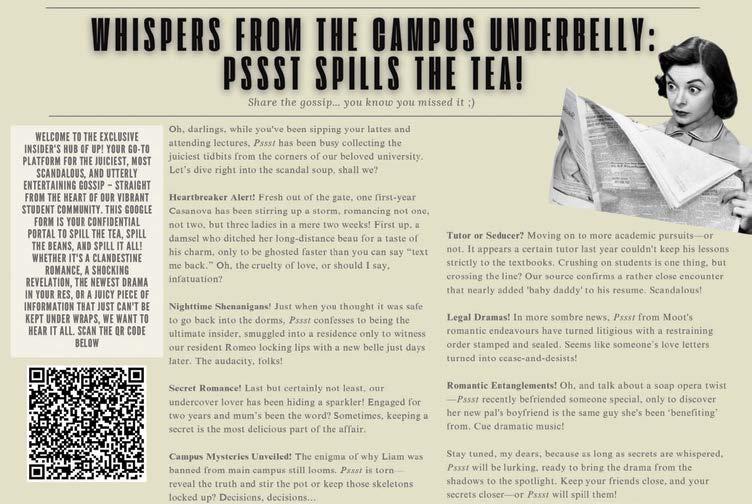
Welcome to the wild world of university relationships, where a UP study guide is not the only thing you will be familiarising yourself with. As you embark on this rollercoaster ride of romance, sex, and dating, it is crucial to keep one thing in mind: consent is key. But fear not, for there is a way to navigate this labyrinth of love, laughter, and late-night cramming sessions.
First things first, let us tackle the basics. What exactly is consent? Well, think of it as the golden rule of relationships, the
enthusiastic and ongoing agreement between all parties involved. It is about communication, respect , and understanding each other’s boundaries. Remember, a “yes” is only valid if it is freely and soberly given, and it can be withdrawn at any time. So, before you make any moves, make sure you have the green light!
Now, onto the fun part – navigating the murky waters of university romance. Picture this: you are at Zanzou, surrounded by your fellow students, and you lock eyes with someone across the room. Sparks fly, and before you know it, you are deep in conversation, bonding over your shared love of the bacon and avocado
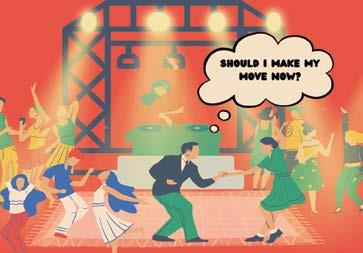
bagel from Lucky Bread or Jojo Siwa’s Karma choreography. But hold your horses, Romeo and Juliet. Before you make any grand gestures, make sure to ask yourself: Do I have their consent?
When getting consent, it is better to be safe than sorry. If you are not sure how comfortable someone is engaging with a specific act, you can ask them. Whether it is sex, a kiss or even holding hands, getting consent first is never a bad idea. However, in some cases asking to make a move may feel awkward or uncomfortable. Luckily, there are some ways that you can gauge whether it is a good idea to make a move.
Pay attention to their body language:
If their body language is closed off, it probably is not the right time to try and make your move. This could look like them having their arms crossed, sitting far away from you, making poor eye contact or fidgeting a lot. On the other hand, if the other person is leaning in closer, smiling a lot, making deep and consistent eye contact, or if they are sitting facing your direction with their arms open – this might mean that they will be receptive to your advances.
Time and place:
If you are meeting someone for the first time at 14:00 in a well-lit coffee shop, chances are that going in for a kiss probably will not go over all that well. If you just had an amazing first date in a dimly lit, romantic restaurant in the evening, a goodbye kiss (or “dot dot dot”, as they say in Mamma Mia) could be really fun and well received. The location and time will help you figure out which level of physicality, if any, is appropriate.
It is no surprise that sex and dating make up a large part of the university experience, whether you are straight, queer or ace. University is the first time many people will experience freedom and discover more about themselves. For many queer people, university will not only be the first safe place for them to explore their sexuality, but also a place for them to find a community among other queer people. To navigate this space safely and successfully, here are a few tips on queer dating.
1. Do not enter the dating scene unless you are comfortable with who you are. Whether you are queer or straight, getting into a relationship when you do not know who you are can be an incredibly bad idea. But if you are ready to take that step, remember that honesty is always the best policy. Do not be afraid to tell your partner where you are on your journey. Boundaries are an important aspect of any kind of relationship, whether it be a friendship, situationship or a romantic relationship. Being in a relationship entails a lot more than cutesy dates and romantic getaways; your comfort as well as your partner’s need to be a priority. Relationships require a lot of mental energy to tackle tough conversations that will come up. Thus, making sure that you are in a good mental space will benefit both you and your potential partner(s).
2. Be okay with rejection. Finding a partner in today’s world as a queer person has its challenges, the big one being that straightness tends to be the assumption when meeting new people. For queer people, not only do they have to deal with rejection, but also the somewhat inevitable discomfort heterosexual people may feel after being approached by someone who is queer. But times are changing,
and more and more straight people take it as a compliment and move on with their lives. So with this twofold problem, it becomes doubly necessary to be able to handle rejection. Being rejected does not mean that there is anything wrong with you. Take the rejection with a nod and an “okay”, then move on. The world is too big for you to be pining over someone who does not want you.
On the other side of this conversation, it is also important for you to learn to be the rejector. Just because another person is queer and you are vibing, it does not mean that you are required to date them if they express an interest in you. Do not dive into the dating scene headfirst if you are not ready, or if you are not attracted to the person asking you out. Be confident in expressing who you are and what you want. This is why number one is so important. Confidence in yourself translates into other areas of your life.
3. Be educated!
While it is all good and well to have confidence in yourself, it is equally important to be educated on the sexual landscape of your queer community. The last thing you want is to finally be okay with yourself and have someone who respects you only to get an infection or an STD.
Condoms are the most obvious preventative measure you can take, but condoms are not only for sexual interactions with men. Girls, when you do not feel comfortable with a woman’s raw hand going to your forbidden places, remember that condoms can be put on fingers to create a barrier between the two of you.
You can also get dental dams, i.e. the condom of the mouth. Dental dams are thin, flexible sheets of latex or polyurethane which can be used as a barrier for any kind of oral contact
Test the waters:
Before going in lips first or trying to initiate a cheeky handhold, test the waters first. Give the other person a hug, lean in towards them, lightly brush their arm or shoulder, or even try holding eye contact for longer than normal to see how they react. Watch their body language and facial expressions to determine whether they are keen. Slowly increase the amount and intensity of physical contact, and chances are it will all feel much more natural. If at any point the other person starts feeling uncomfortable with the contact, scale it back, slow it down or just stop completely. Pay attention to the other person and do not be scared to ask for clarification when you are having trouble reading them.
Consent is also important in the online sphere. When using dating apps or Instagram, have fun and slide into DM’s to your heart’s content. Just be respectful when you do not get a reply (do not reply with “Well you are ugly anyway b*tch!” or anything along those lines) and do not send any unsolicited photos. When it comes to sexting or sending flirty messages, it is best practice to start light and see if their responses are meeting your energy. In general though, it is best to keep things PG-13 when you have not met this person yet.
By prioritising consent, communication, and respect, you will not only navigate the turbulent waters of university romance with ease, but also create a campus culture that celebrates healthy relationships and mutual respect. So, here is to love, laughter, and lots of consent – may your university experience be filled with all three!
with any private areas. They can help prevent the transmission of STIs such as herpes, gonorrhoea or HIV.
Otherwise, sex toys are a great way to have fun and stay protected while doing the deed. Condoms can also be placed on sex toys if they are being used with multiple partners. But of course, the most important thing to remember is to clean them immediately after use.
And above all else, get tested regularly. Consult with professional health practitioners about testing and available preventative measures like available vaccines. The Student Health Services is also a great resource available to students, as they can assist you and answer any questions you might have about ensuring that your sexual health is maintained. Their offices can be found on Ring Road, next to Thuto.
4. Be safe.
South Africa, as a country, is LGBTQIA+ friendly. The constitution protects your rights as a queer person. However, this does not mean that you are completely safe. Homophobia is an undeniable reality in South Africa, so whether you are arranging a date or a hookup, you need to put your safety first. Do some research on how safe the apps you use are, and arrange meetings in public places. Share your location with friends and loved ones. Give extensive details to your loved ones about the person you are meeting so that they can easily be identified.
The world of sex and dating can be super fun and exciting, but it is so easy to get swept up in all the madness and drama that is the queer community. Remember that your comfort and safety has to be your priority, but once you have checked all your boxes, go out into the world and enjoy your sexy era!

It is 9:02 on Monday, location is the bowels of HB, and the Boss gives the briefing. The assignment: group work. The team? A rag-tag bunch of misfits who are severely overworked (well, some of them) and underqualified. Your team is set, the roles are up in the air, and you barely understand the brief. Failure is not an option, especially when you flunked that test you studied a whole night for. You are thinking to yourself, “I work better alone.” But there is no flying solo, so it is time to assign roles before the roles assign themselves.
The Leader
There are three leader archetypes: the elected, the zealot and the resigned. If you have ever asked the question, “So, who wants to be the group leader?” it is likely that someone ended up being you. The responsibility of arranging meetings, sitting on people’s heads for completing their part of the work and submitting the final document has been dropped in your lap. If you are the zealot, however, you waste no time in gathering phone numbers to form the group chat and doling out tasks. Some may dub you a control freak or a tyrant who needs the assignment submitted a week before the deadline, but the operation would fall apart without you. Lastly, as the resigned leader, responsibility is thrust upon you because the group chat has been silent for a week, and someone has to take charge. Might as well be you.
The Slacker
Do you refuse to contribute any ideas on how to tackle the assignment? Are you never responding to messages on the group chat? Is your group leader constantly hunting you down for your portion of the work? If so – stop it! Get some help. But seriously, you just might be the slacker, and no one likes that. The basic premise of a group assignment is a shared workload, and not doing your share is detrimental to the team. Imagine the assignment is breaking into Uncle Cyril’s house to attain some of that couch money and your one job was to be the lookout. But no, you opted to play Candy Crush instead. So, rather than buying a fridge for your new apartment, you are in the back of a SAPS vehicle trying to ignore your team members’ bombastic side eyes.
Nothing is ever good enough for your high standards, which is why you insist on checking everyone’s work before final submission. You claim you will do just a little tweaking, only for your group members’ work to be unrecognisable by the end. The slacker loves you and will regularly use your type A personality to avoid work. On the other hand, the rest feel you could trust in their abilities more and give them some room to breathe.The hard truth
is, you don’t always know better, sweetie. Your pursuit to have a grammatically sound assignment that elegantly incorporates all the points on the rubric is valuable to the team. But micromanagement does not translate well at a real job, where you make real money. So, consider having some faith, trust and a little bit of chill pill dust.
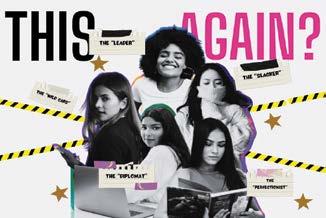
You are “never too much, never too much, never too much”. You have found the sweet spot amongst the group by being a consistent contributor without cramping anyone’s style. You meet your deadlines, leaving you enough time to ask if there is anything you can help with. One possible problem is that, as a mere observer to any drama in the group, you might receive flack for not taking sides. However, everyone could learn something from your “just get the work done and move on” attitude because it is never actually that deep.
As a group member, you like to keep the other members on their toes (and get on their nerves). No one is certain if you will pitch to meetings, as something is always coming up five minutes before. When you do pitch, it is a coin toss on whether you will contribute some philosophically profound insight or save your brain power for League of Legends and just be a “yes man” throughout the project. Characterised by spontaneity and ingrained with the saying “I’ll go where the wind takes me”, you are probably the most challenging member to work with. At least the team knows the Slacker will just slack. However, your unconventionalism can also be a gift to your team by providing a much-needed answer when they least expect it.
There will always be a group assignment or some equivalent at some point in your university career. The challenges of poor communication, conflict, unfair work distribution, lack of clarity and dealing with people in various roles is normal. Here are some tips for overcoming these challenges without any casualties:
For example, the Leader can organise the group’s first meeting early so that you start the assignment as soon as possible. It is also the Perfectionist’s time to shine by creating a shared Google Calendar to schedule meetings, work checkpoints, and the submission deadline. (The Leader should just remember to rein them in before they stage a coup.) When work is divided, a shared Google document can be created so that the Teamplayer can get
Addiction is around us constantly, whether it is that person you spot gambling online during a lecture, drinking 20 cups of coffee per day, or sucking on a vape and blowing smoke into their sleeve to hide it. Addictions can form from any substance or action that a person depends on to function in their daily lives. But do these addictions indicate a deeper issue?
The Mirriam-Webster dictionary defines addiction as “a compulsive, chronic, physiological or psychological need for a habit-forming substance, behaviour, or activity having harmful physical, psychological, or social effects and typically causing well-defined symptoms (such as anxiety, irritability, tremors, or nausea) upon withdrawal or abstinence”. Addictions of any form occur when an action causes the pleasure centres in the brain to become overwhelmed. This causes the brain to feel “rewarded” by the action, and thus the continuous cycle of repeating the action to get the “rewarded” is formed.
Over time, the flooding of dopamine into the pleasure systems destroys these systems, leading to the desensitisation of dopamine reception and forcing the brain to require and seek out the action that has previously flooded the system. Different factors are responsible for someone being prone to addiction, such as social influence, self-medication, peer pressure, genetic factors, mental health, stress, and biological factors.
All of this leads to the ultimate question: is addiction a form of self-harm or self-medication? Unfortunately, there is no definite answer. Many addictions start as a “pick me up” to help someone get through the day. But as time goes on, it often becomes the reason that a person gets out of bed.
The consumption of substances can indicate an underlying issue
Take caffeine, for instance. A student consumes an energy drink to stay awake after a long night of studying. The caffeine makes them feel awake and engaged, but soon after, the effects wear off. This causes their lethargy to return, and leads to needing another caffeine “hit”. The cycle continues until the student needs caffeine to wake up, function and engage with life. This example of a caffeine addiction illustrates how a simple substance used as a “quick fix” for an issue (tiredness) can lead to a bigger issue
Someone can become addicted to anything that gives them dopamine. This ranges from caffeine, alcohol, drugs and vaping to cell phones, exercise, or anything that causes the system to flood with dopamine. If the body’s receptors are already struggling to cope, even the slightest dopamine increase can cause a reward sensation. This leads to the behaviour being repeated to allow the reward sensation to reoccur. Eventually, the original amount is no longer enough , and the action is done more frequently and in larger volumes to receive this reward “high”.
An important aspect to remember is that addiction is not just one dimensional. Many students do not have access to mental health
their part of the assignment completed and apply pressure to other members to contribute.
All members should check the group chat for messages at least once a week (ten times a day is too much, Perfectionist). Any important messages should be pinned in the group chat or added to the description; thus, the Slacker will, at the very least, know the dire details and cannot argue ignorance. Also, holding meetings directly after the module for the assignment is an easy way to catch the entire team (even that slippery Wild Card) without much effort. The creation of an attendance register for every meeting can help you substantiate a lack of effort or participation from a particular member.
Sometimes embracing the unconventionalism of the Wild Card by having your meetings at Buzz instead of the library can be beneficial to idea generation for the project. Or taking the Slacker’s more relaxed approach of not overthinking the brief can lead to understanding. Perhaps, you (Leader) and an opposing personality (Slacker) can team up to complete a section of the assignment together. These pairings will allow for opposing ideas in the work but also for the balancing out of different characteristics. The Slacker can learn to meet deadlines and submit their own work while teaching the Leader to stress less by working smarter and not harder.
To overcome challenges, specifically those related to the different personalities in a group, requires you to accept and embrace those challenges. You need to understand who you are dealing with and make it work. In doing so, you build your soft skills of communication, teamwork and conflict resolution, which will elevate you when you graduate. Your whole professional life is going to be a group assignment, so consider these group projects practice for the real world. And do your best to strive for that golden status: assignment submitted – mission complete.

professionals or do not have the funds to pay for medication needed to address the mental disorders that they have. But life goes on, and for most students, a quick fix can help them get out of their rut or help ease the symptoms they experience because of their disorders. Addiction has become symbolic of the deeper issues in society. Students need caffeine because they have too much work to do. People smoke because they constantly feel stressed and just want one moment of peace. Young adults turn to drugs to ease their pain, whether that be mental or physical.
Experimenting with substances does not automatically lead to addiction. Addictions form when the dependence on a substance or action becomes something that someone cannot live without. Addiction is a serious medical condition and various steps should be taken to ensure one’s long-term health.
If you or someone you know is struggling with addiction, please contact the UP Student Careline at 0800 747 747.
America’s sweetheart, Little Lisa, is spending her Saturday morning accompanying her mother while running errands. Lisa and her mom strolled to their local pharmacy, their final stop. As they walked down the street, hand in hand, Lisa noticed a strange-looking man. Lisa was a curious child and turned to her mother with questions, unable to take her eyes off of this puzzling sight. The man frantically argued with himself about something that he seemed to find incredibly important. The few teeth he still had were as yellow as the sun she had drawn in class on Friday, and the scabs all over his face made him look like a picture in her “Match the Dots” colouring book. Little Lisa’s mother picked up the pace as she explained, “Don’t worry about him, Lisa. He’s a meth addict. There’s no hope for him.”
Lisa could hear the unwavering disapproval in her mother’s tone; she had been the receiver of that tone many times before Lisa’s curiosity got the best of her; she had to ask questions. “What’s meth, Mommy? And why does it make that man a bad person?” Without hesitation, her mother began, “Meth is a terrible drug, Lisa. The full name is methamphetamine, and junkies will spend all of their money to smoke, shoot, and snort it. They’re addicted, you see. They can’t function without it. But don’t feel bad for him, honey. He did it to himself! People like that should be wiped from society. How someone can put such dangerous chemicals into their body is beyond me.”
Lisa remained quiet for the rest of their walk, pondering the things her mother had said. Lisa realised that while she knew how her mother felt about meth, she had no idea what it was. Only once they had entered the pharmacy did another question arise in Lisa’s mind. “Why are we here, Mom?” Her mother smiled, “To get your Adderall and to get Mommy’s diet pills. We will each take one pill every morning after breakfast.” The two walked out of the pharmacy. One carbon atom and three hydrogen atoms are the only thing separating them from the junkie across the street.
Adderall, the catchiest name on the drug market, belongs to the amphetamine family, a cluster of stimulants that have been tweaked over centuries. Lazar Edeleanu, the father of amphetamines, was a Romanian chemist responsible for synthesising the first amphetamine compound in 1887. But doing something once is never enough, and in the late 1920s, the American chemist and pharmacologist Gorden Alles resynthesised the substances as amphetamine sulphate (amphetamine salts).
greatly influenced by this. Jack Kerouac, an American novelist and pioneer of the Beat Generation, would spend hours in these jazz clubs admiring the erratic sounds, longing to model his writing after this free rush of music. After discovering the amphetamine inhaler, he used it as an aid to his writing for years.
Benzedrine did not discriminate when it came to its target market. While Dad was taking Benzedrine to stay awake during the war, Mom was at home taking it to fit into her new dress. During World War II, the US government provided soldiers with two of their very own Benzedrine pills for every combat mission, boosting patriotism through increased vigilance and energy. According to Nicolas Rasmussen, the author of On Speed: From Benzedrine to Adderall, by the end of the war, an estimated 16 million Americans had been exposed to Benzedrine pills.
The idea of youngsters abusing any substance they can get their hands on is not a new phenomenon. The first article discussing college abuse of amphetamine was in Time magazine in 1937. College kids started taking the gauze out of these amphetamine inhalers and chewing it to absorb the amphetamine at a faster rate (how innovative). By 1959, the state had had enough of all this silliness of jazz and amphetamine-filled college students, and the Federal Drug Administration (FDA) cracked down on Benzedrine inhalers, making them available by prescription only. Six years later, the United States Food and Drug Administration limited amphetamine to prescription use only, but non-medical use remained common.
brought to the market as the new, upgraded fix for ADHD. The catchy name was no coincidence. When the pill first made its way onto the market, it was marked with the label “Obetrol”. It was not long before a pharmaceutical businessman heard that the drug was being used to treat attention deficit disorder (ADD) and searched for a way to profit off of stigmatisation. He wanted individuals to feel included. This drug was not just for the few; it was for all. Adderall’s name reflects its makers’ hopes for expanding the customer base, “ADD for all”.
With the perfect name in hand, all that was left was to determine how to go about prescribing the drug. With no definitive test, how do you diagnose ADHD? Doctors came up with a perfectly profitable solution. They believed that if you prescribed a child with Adderall, and it worked, that child had ADHD. The problem with amphetamines, as we saw before, is that by its very nature, it does not discriminate. Mostly everyone who took the stimulant saw improved focus and concentration, which led to mostly everyone being diagnosed with ADHD. It has been nearly 30 years since Adderall found its place in the medicine cabinet. In 2021, about 41.4 million prescriptions were dispensed in the United States, up more than 10% from the previous year.
Currently, South Africa has refrained from allowing the legal distribution of Adderall. According to the South African Health Products Regulatory Authority, Adderall is classified as a Schedule 7 pharmaceutical substance under the Medicines and Related Substances Act of 1965 and is not legally available for purchase.
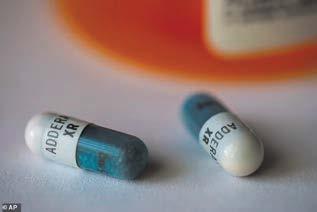
Much like table salt adds flavour to your favourite meals, amphetamine salts add flavour to your brain. Amphetamine is a salty stimulant that enters the central nervous system and goes to work on the catecholamine system of the brain. Unlike the twisty and endless catacombs, this catecholamine only has two important parts: norepinephrine, a pompous word for “adrenaline”, and dopamine, a happy little chemical that activates the brain’s reward centre. When amphetamine salts put on their suits and go to work on the catecholamine, they follow the same monopolisation system that allowed the diamond industry to flourish: cut the supply, then flood the system, and repeat. Amphetamine salts either enhance the release of catecholamine or block its reuptake; the dopamine allows for extended periods of concentration and higher pain tolerance, while norepinephrine increases wakefulness and focus
With a market swarming with hopeful souls chasing the American dream, a nifty tool to keep you awake, alert, focused, happy, and less snackish for hours on end is just what the client ordered. In 1933, Smith Kline & French introduced Benzedrine, amphetamine inhalers that one would snort to get rid of any pesky sinus issues. The history of the “pep pill” begins.
In 1937, the tablet form of amphetamine, Benzedrine sulphate, was introduced to the market. Doctors would prescribe these pills for depression, narcolepsy, and chronic fatigue. The pill coexisted with the amphetamine inhaler that had been on the market for four years. Amphetamine inhalers became a staple of jazz culture during the 1940s and ’50s. Jazz clubs were filled with talented musicians like Charlie Parker, who would snort amphetamine in between songs. The Beat Generation, a literary subculture movement started by authors who would frequent American cultural and political hotspots like jazz clubs, was
Regulation has never been synonymous with limitation. While the FDA may have put a locked door between individuals and amphetamine, all one needed was a key: a little piece of paper signed by an eager doctor. The frequency with which doctors would hand out prescriptions was no secret, and very soon, these laissez-faire doctors were branded “Speed Doctors”. The Beatles’ song “Dr Roberts” is inspired by a doctor-muse who worked in New York City and would freely prescribe amphetamine to any celebrity who walked through his door. Max Jacobs, a.k.a. Dr Feelgood, was one of these Speed Doctors and, for a time, held the coveted position of Pres. John F Kennedy’s favourite doctor. By the height of the pharmaceutical speed epidemic, 50 pills per man, woman, and child were being manufactured. The ingredients found in these pills are essentially the same as those used to treat ADHD today.
By the 1970s, the thought of using Benzedrine for runny noses and smaller hips became frowned upon. With the passage of the Controlled Substance Act, amphetamine became a Schedule 2 drug, or one “with a high potential for abuse, with use potentially leading to severe psychological or physiological dependence”. Boy, oh boy, seemed like people were catching on to the idea that this whole amphetamine business might not be as hot as it looks But just when it seemed like folks were ready to walk away from amphetamine, psychiatrists, chemists, and doctors came together for the amphetamine resurrection. The seventies saw the clinical recognition of ADHD-like symptoms in a way that legitimised the condition now known as attention deficit hyperactivity disorder (ADHD).
With the legitimation of a medical condition comes the legitimation of the drugs used to treat it. In 1996, Adderall was
Suppose you are caught walking the streets with Adderall in hand and no valid prescription by a South African medical professional to back it up. In that case you are staring down a criminal offence with a fine and imprisonment at the end of the tunnel.
You may take it upon yourself to resist this prohibition and endorse the availability of this drug that was meant for all. To those Adderall enthusiasts, think long and hard before you begin your fight for a pill with the nickname “college crack”. While you can expect short-term side effects like insomnia, anxiety, appetite loss, and nausea, the kicker is that amphetamine is inherently addictive. Because of its effects on dopamine, the feel-good chemical in your brain, Adderall can alter how dopamine neurotransmitters work. This means that after extended use of Adderall, users may not be able to feel any pleasure without taking the drug, making its existence a requirement as much as an addiction. With long-term use, you can expect side effects like seizures, cardiovascular disease, depression, aggression, panic attacks, and toxic psychosis.
Another consequence of long-term use is that the human body tends to develop a tolerance to amphetamine, meaning that the longer you use it, the higher the dosage you need to achieve the same effects. High doses of amphetamine can cause the body to produce high levels of a protein called FosB. This protein is essentially the master switch for addiction and, once activated, increases the severity of addiction behaviour. The alternatives discussed in the previous paper edition, such as Ritalin and Concerta, are by no means innocent and safe enough to give to your sibling’s new kid. However, these alternatives are made up of the chemical compound methylphenidates, which is less likely to cause addiction than other amphetamines like those found in Adderall. Much like Adderall, addiction does not discriminate.
There goes Little Lisa, walking hand in hand with her mother. It has been six months since they walked into the pharmacy for their first prescription. A shadow of silence follows them as they go along; neither one is as chatty as before. Lisa’s mother keeps letting go of her hand to pull up her pants, which keep slipping past her hip bones, before picking at the scabs that seem forever to be a part of her complexion. Looking a little closer, it seems Lisa has lost some weight, too. Neither have had a good night’s rest in quite some time. Lisa’s eyes do not leave the ground. No more room is left in her mind for curiosity as she mumbles argumentatively about her failures and anxieties. As they walk past, the junkie across the street, who has come to know them through their prompt monthly visits, watches their familiar behaviour with empathy. He mumbles to himself, “I got my daily fix from the streets, and there they go getting theirs from the doctor.”



you’re the only reason I go to that lecture
To the blonde mechanical engineering guy who always talks about power stations and has a German name. I think you’re SO HOT. If you curious of who I am, I’m the girl always staring at you when you in workshop.



I’ve watched you from afar, entranced by your essence. I’ve wondered about the depths of your being, pondering where you hail from and the stories that shape you. You are a celestial being, a star in the night sky, with a luminosity that defies explanation. I heard you are taken, but my heart refuses to accept that as a barrier. What girl in her right mind would let such brilliance roam the world alone?
Tshepang Mathe, Act Sci, if I had my way, you would be mine
To the guy who looks like super man that’s always outside the steers, who drives the white ford figo - come treat me how you treat those ice creams
To Deon I sit behind you in EBN 111, and I’m too shy to talk to you but I know we are meant to be soulmates, I know you have a girlfriend but I’ll wait for you.
Every time I see you, my day gets a little brighter. Just wanted to let you know you bring a smile to my face without even trying. To the cute Engineering guy, with the crystal glasses and VANS, sitting right in front of me in CHM171 on Thursday mornings. Let’s grab a naughty lil coffee together sometime!
To my guy best friend who I’ve had feelings for since high school, I’m still in love with you and want to spend everyday in our ENG110 lecture together
To the sexy man with dark curly hair and earrings, who bought a coffee and a toasted sandwich at Lucky Bread. You were on your way to the Centenary building with your friends afterwards. You have my heart and you can have my children.
To Byron. I think you’re so fine and want to ask if you’ll be mine. I see you in all my classes and want your hands to touch my ass(es). Your body is like a horse and I’m an equestrian ; ) xxx see you ‘round scrumptious
Dear Taku, I just want to hear your voice one more time. I miss you, please Unblock me.
To UP’s most magical girl Mila, You have charmed me. I know you pine for another man, but I am the one for you. Every night I dream of your long luscious hair and the way it frames your gorgeous eyes. Let me make you my emo princess.
Matla Masemola, everytime i see you my heart melts. You look so good, better than you did back in high school. i’ve had a crush on you since then
To Reabetswe with the long hair and glasses in my BUS100 class.I really like you,your beauty has captivated me from the beginning of the year .I would really like to take you out :))
Hello UP student, this is a safe place to shoot your shot people how you feel about them, hit on your crush or compliment other day. Anything positive, really. Try to be as detailed makes it easy for the person to identify themself.
Do you think
Email: shootyourshot@pdby.co.za
To the 6’1 (6’2 in my heart) electrical areece
I don’t call you dreamy -your passenger
To the tall girl with a bob in my criminology would do any amount of prison time is Kiki ) You always ask such intelligent just hearing your voice. you have the
To the sweet girl who works at the Open ly wears a denim jacket Have you ever heard of JVMML VY If this gets published, I’ll be bringing I only greet
To the tall boy
Perhaps there will be a time where the trip home will be put off, just for but I’m too scared to ask you out. So doors close. Just know, Signed, The girl with Hey Boitumelo. We met on the last honestly — you were the standout event. couldn’t say anything else and I regret number. I couldn’t stop raving about great. Take
To my WTW114 tutor with the dark ly adorable. Who knew math could equation, the variable that makes everything world of numbers and equations, you’re happiness.

at all those cute people you see around campus. Tell those compliment a person on that outfit they were wearing the detailed and creative as possible with your description so it If both people agree, think this is you?
shootyourshot@pdby.co.za

electrical engineering student who i listen to areece with dreamy as a joke ;) passenger princess

criminology and jurisprudence class, I time for you sexy girl ( I thi intelligent questions - it makes me flustered the kiki to my heart - please be mine
Open Labs in the mornings, who usualjacket and has light hair: a key 7 Caesar Cipher?
VY OPRL? another cipher for you with the smile greet you with.
boy on the train, I miss my stop and so do you. That for the day. I’d like to get to know you So every time I say goodbye and let the know, you are on my mind. Signed, pink hair. Xx
last day of the quarter at the rugby and event. I came up to you and said Hi but regret not saying more or getting your about you and I just hope you’re doing Take care.
dark long hair. I think you are absolutecould be fun? You’re the solution to my everything balanced and complete. In a you’re the one constant that adds up to happiness.




entrance(19/03/2024) I think you are the degree that my parents sent me to get ,i’d really love to get to know you better

To the guy from the library with a black bucket hat who helped me with the keyboard situation, it was really nice to meet you and I hope to see you again and get your name since you asked for my name and didn’t give me yours.
to the brunette boy who wore a chequered flannel and shorts on monday (18th) , i’m sorry i screamed smash so loud when you walked past me… you’re just the finest boy i’ve seen on campus and i’d do anything to do the above mentioned
Keegan who is studying BA law, first year. Your beautiful longish brown hair and sharp jawline makes me weak. I truly believe that you are the love of my life. I watch you hang out at the law building almost everyday but I never get the courage to ask you to be mine. I hope you see this and feel the ever growing connection between us. Our invisible string will soon cease to exist and will become visible lightning.
To the 2024 Commercii Sports EC, you’re really cute. I think you’re my soulmate
Keegan from law first year . I sit in your politics class thinking about your jawline cutting an apple. You look like you deal drugs and I wanna be the drug you deal. Love you baby. Xoxo
Connor Koorts you cutie patootie. Roses are red violets are blue meet me at the piazza on Tuesday at two

To Daniela, the absolutely kind, amazing and beautiful girl who sits next to me in all my law classes like JUR 110 You’re the only element in my case, the only thing I need to win is you
To Kiki, the most intelligent girl I know in my PSR 110 class. You’re the only witness I need to prove that true love exists.
To the gorgeous Kiki in my JUR 110 class. I hope you don’t mind if I ask for your number because i’ve got a strong case for a second date. Do you accept?
To the guy on Prinshof with the really good style who walked out of a lecture hall, smiled and said hi to me before having an online meeting behind me: This is me shooting my shot :)
To Demi from the moot society- just when I think I have you figured out you confuse me again. All I know for sure is you make me feel some kind of way.
Last year, PDBY and University of Pretoria Archives led students and staff on an interactive journey through the UP Archives Finders Winners Competition. Between 14 August and 2 October 2023, three sets of five questions were published in PDBY. The answers could be found by taking a stroll down memory lane, either by visiting the university’s “A Day in the Life” exhibition or uncovering clues left in PDBY The most resourceful detectives stood a chance to win coffee and printing vouchers, a UP Shop voucher or cash prizes.
“Women at UP” kicked off the competition at the beginning of National Women’s Month. This set of questions honoured UP women who had contributed to the history and culture of the university. The second set zoomed in on the architectural awe of the Hatfield campus. Competitors were taken on a tour through the magical significance of ancient cornerstones. Lastly, the focus rested on the symbols and traditions of UP. In the span of 5 questions, competitors were led through 115 years of the institution’s heritage.
Competitors waited eagerly for the results to be announced. Finally, on 14 March, UP Archives held an intimate prize giving at the Old Arts Building. This was hosted by Prof. Karen Harris, the director of University Archives. Prof. Harris took guests on a thrilling adventure through the reasoning behind holding the competition, with a brief history on a previous national competition called “Finders Keepers”. She continued by thanking the sponsors and announcing the much-anticipated results of the competition. As added magic, a wasp or perdeby was zooming around prizewinners as their photographs were taken. This was significant, as PDBY was originally called Die Perdeby.
The winners of the competition were as follows: Domonique Bennetts, Justine Binedell and Duncan Lotter, Gemma Ferguson, and Bets Wentzel. They received cash prizes, Minolta printing vouchers and a UP shop voucher. Further finalists were Estelle Schoeman, Tamryn O’Conner, Fortune Ngabu, Suzanne le Roux, Luka Kruger, and Nina du Preez, who received cash prizes and Aroma coffee vouchers.
Final recognition must go to the sponsors for their support. Without the UP Registrar, PDBY, Konica Minolta, the UP Shop, Aroma Coffee, the HPC, and Coffee Buzz, the competition would not have been possible. UP history and culture have been given a new breath of life through each reader, competitor and sponsor.
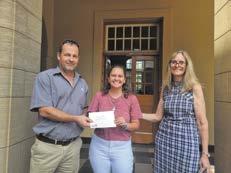
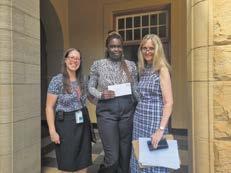
Naudette Mukoni & Danielle Yeatman
The past few years have seen a major upsurge in true crime shows, which are gripping the attention of audiences all over and catching recordbreaking ratings. These crime stories often have viewers glued to the screens and provide top-notch entertainment whilst generating millions in profits for streaming companies. However, the genre is met with unavoidable conversations about the glamourisation of serial killers and the exploitation of real-life tragedies. Nowadays, many viewers seem to have an unhealthy obsession with these shows and can be seen romanticising criminals. Beneath the innocent fascination with true crime lies a never-ending debate regarding the psychological and societal harm the genre has on the world and its viewers.
As true crime falls into the entertainment industry, companies such as Hulu and Netflix are often well equipped with the formula of making a show a viral success. The problem comes in when considering how ethical it is for an entertainment company to deviate from the true events of the crime, adding scenes that aim to have the viewer empathise with the criminal. Netflix’s miniseries The Staircase received strong backlash, as many critics noticed calculated omissions in the retelling of events that allowed the criminal character to be portrayed more favourably.
Because a company’s overall goal is to maximise profit, they tend to blur the lines between entertainment and reality. Shows often adopt a “selective victimisation approach”, with notable disparity in how stories about people of certain demographics are covered. American entertainment companies often favour shows with white female victims, failing to cover stories involving African American victims. This is disconnected from the unfortunate reality that African Americans make up a higher percentage of crime victims. For example, according to the Statista Research Department, the FBI reported that of the total number of murder victims in 2022 in America, 10 470 were African American, while 7 704 were white. However, white victims and stories seem to dominate the true crime genre, contributing to misconceptions about what the common victims and perpetrators look like.
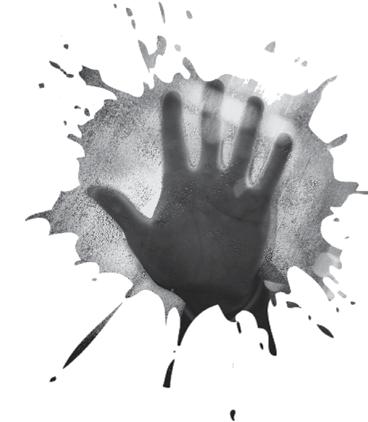
viewers expressed sentiments of understanding “why Dahmer ended up killing people” based on the isolation and bullying he endured, as if those are fair grounds to excuse murder. True crime often narrates the events in a way that allows viewers to develop an emotional connection with the criminal. The addition of an unfortunate childhood backstory makes viewers perceive the criminal as merely a product of his environment, deserving of sympathy.
The commercialisation of crimes contributes to this debate regarding the ethical, or rather unethical, nature of true crime. The repetitive retelling of crime stories through the lens of the perpetrator has become a popular approach that seems to generate higher views. This approach often creates a romanticised version of the serial killer, moulding a fanbase that tends to ignore the killer’s harmful acts. True crime productions often justify their programs by arguing that they are shedding light on the lives and stories of these victims. Yet, when met with resistance from victims and families, the production team gather their forces and push on.
It is imperative to realise the real suffering and consequences of true crime obsessions. Some of these re-enactments are insensitive to victims and, if not done correctly, this glorification may cause viewers to forget who the true antagonist is. Often, shows do not request or receive consent from the victim or their families, and this raises the morality issues of the production. Eric Perry, a relative of one of Dahmer’s victims, had expressed on social media how Dahmer – Monster: The Jeffrey Dahmer Story had re-traumatised him. The darker side of true crime stories can also be seen in a real-life event where a South Korean girl who loved true crime became obsessed with “trying out a murder”. After taking inspiration from crime programmes, she ultimately crafted a murder and was later incarcerated.
The casting of seemingly attractive actors to portray killers and creating a sympathetic backstory leads the viewer to empathise with and romanticise the criminal. Casting Zac Efron, a man who has twice been voted “the sexiest man alive”, as the infamous serial rapist and killer Ted Bundy in Extremely Wicked, Shockingly Evil and Vile seemed a rather specific and peculiar choice. Another good example is the casting of heartthrob Evan Peters in Netflix’s hit series Dahmer – Monster: The Jeffrey Dahmer Story, and the addition of a “quirky” nature to his character. The series quickly became one of Netflix’s most watched shows, with many viewers tuning in to not only indulge in the intriguing story, but also the attractive lead actor. Online
There is no definitive explanation for why viewers have fallen in love with true crime. People have explained how these crime stories allow them to become familiar with the legal system and the world. Although education on the justice system and human interaction is of great importance, it is equally important for viewers to remind themselves of the vital element of true crime: entertainment. Dean Fido, a Psychology lecturer at the University of Derby, suggests that true crime offers “excitement and an intellectual challenge” for viewers, which can be a reason for this ever-growing fascination. Fido further posits that it is inherent in humans to be drawn to new situations that activate their problem-solving skills in their homes. Subsequently, viewers find satisfaction in seeing justice being served for heinous crimes and are drawn to these shows for that very feeling.
True crime also allows people to experience dangerous situations without actually being the victim thereof, adding to the excitement factor of these productions. Vicariously living through a dangerous situation can also help viewers discover what to do if they ever fall victim to such a crime, and this can give them an idea of what type of people and situations they should probably avoid. This explanation is not uncommon when one looks at the female audience, who make up the largest portion of viewers. Female viewers appreciate true crime shows because in the real world they often feel like victims, and they watch these shows in an attempt to learn strategies for survival and understand a killer’s common motives.
Responsibility falls onto the viewer to establish that true crime stories are told for many reasons: to spread news and awareness of crimes and to keep you watching to generate a profit for streaming companies. Although this fascination with true crime can be explained through various factors relating to psychology, portrayals, and society, viewers must be self-aware and consume this type of media mindfully. The entertainment industry is a product of combining freedom of expression with profit. Life imitates art, and art imitates life. But when companies blur the lines between life and art, and viewers are left with sexy serial killers and real-life trauma, the script of Making a Murderer is left in the hands of the viewer, to either embody or leave on the screen.
On 16 March, the University of Pretoria hosted its annual 4 Choirs Concert at the Musaion, a spectacle that left attendees spellbound. Drawing a diverse audience spanning all age groups, the sold-out event displayed the melodic expertise of four distinct choirs, each leaving a mark on the hearts of those in attendance.
Kicking off the musical soirée was the Tuks Camerata choir, whose performance resonated with awe-inspiring acoustics. A standout moment came with their version of “Snow Dance For The Dead” (composed by Sean Doherty), which was infused with theatrical elements such as dramatic gestures and rhythmic foot stomping. Through this, the Camerata conveyed profound political undertones of the horrors inflicted on many during the Russian Civil War, obtaining an emotive response from the audience.
Following this performance, it was the Onderstepoort Community Choir, comprising a blend of budding and seasoned veterinarian students. Despite their modest size, the choir’s rendition of “Masambeni Makholwa/ Modimo Re Boka Wena”, a traditional African spiritual arranged by Edwin Mitas, reverberated throughout the venue with unparalleled intensity. Their performance, punctuated by lively dance routines, culminated in a humorous twist with a rendition of “Old MacDonald” that left the audience in stitches.
Taking the stage next was the UP Youth Choir, a dynamic ensemble highlighting the talents of adolescents aged 13 to 19. With their rendition of the traditional IsiZulu song “Shona Malanga”, the choir ignited an infectious energy that had everyone swaying to the rhythm. Despite being the youngest contingent, their performance displayed maturity and finesse, earning them resounding applause.
The evening was rounded off with the enchanting melodies of the UP Chorale, an all-female ensemble under the direction of Rain Pienaar. Their ethereal version of the Harry Potter soundtrack “Double Trouble” transported listeners to a realm of whimsy, while the poignant strains of “Please Stay” by Jake Runestad struck a chord of deep empathy. The Chorale’s delicate harmonies and emotive delivery left a lasting impression as the crowning jewel of the concert.
As the curtains fell on the UP 4 Choirs Concert, parents, students, old and young departed with hearts full of melody and spirits uplifted. No intermission was needed for this 90-minute event, as it not only highlighted the immense talent within the university’s musical community but also served as a testament to the power of harmony in uniting audiences from all walks of life. With anticipation already building for next year’s showcase, it is clear that the harmonious legacy of this annual tradition will continue to resonate for years to come. It was definitely a R100 well spent!

Naudette Mukoni
This week’s dish is packed with protein, veggies and flavour. It is everything you need to satisfy your cravings while giving you enough energy as you attempt to Fly@ UP.
Ingredients:
● 2 garlic cloves
● Half an onion
● Spring onions
● Beef steak of your choice (Cauliflower steaks are a great substitute for the vegetarians!)
● Salt and black pepper
● Butter
● 1 cup of sweet corn
● 1 cup of rice
For the sauce:
Just mix up the following ingredients for a yummy sauce.
● 1 tablespoon of oyster sauce
● 2 tablespoons of soy sauce
● 2 tablespoons of honey
● 1 tablespoon of water
● 1 clove of grated garlic
Instructions
1. Thinly slice your garlic, onions and spring onion.
2. Cook the rice.
3. Throw your garlic in a pan and fry until golden brown.
4. Spice up your steak with some salt and pepper on both sides.
5. Fry your steak for 90 seconds on each side to achieve a beautiful medium rare.
6. In a separate pan, sauté the thinly sliced onions in a bit of butter until softened.
7. Slice up the steak and add it into the pan with the onions.
8. Now add the corn, sliced spring onion and a sprinkle of black pepper.
9. Add the cooked rice and pour over the delicious sauce.
10. Enjoy!
Recipe from www.cabagges.world

Campus, club, cram, repeat: Hatfield student life can quickly become monotonous when following the same student recipe. A great way to add a refreshing twist to your schedule is to join an off-campus society such as The Royal Scottish Country Dance Society. Here, you can experience a cultural cocktail like never before: learn how to dance traditional Scottish country dances and experience a bold new adventure.
The Royal Scottish Country Dance Society holds beginners dance classes every Thursday evening. The first evening is free of charge, after which a R10 fee is charged per class. Classes take place at the St Columba’s Presbyterian Church Hall on the corner of Francis Baard and Hilda Street. Sessions start at 19:00 and end at 21:00, with the first half of the evening consisting of general dance lessons, followed by a 15-minute tea break. After this, the teaching continues, mixed with some social dancing and a chance to practice the skills and steps learned.
These classes are perfect for beginners, as the teacher goes through every step in great detail. You do not need to be a graceful dancer to enjoy this experience. As the dances are generally quite short, there is plenty of time in the two-hour session to grasp the steps, practise and leave feeling ready to step right into Scotland.
Three of the dances covered in the class are The Deil Amang the Tailors, Joie de Vivre and The Wind on Loch Fyne. These dances consist of dancing in a line or triangular formation with a partner. Another great reason to go Scottish country dancing – it is not a solo event! Dancing with a partner allows you to get to know different people or even take a special someone out for a dance-floor date. The dances are all intricate, consisting of moving in circular formations and leading partners through other couples. Despite this, the steps are simple: mainly foot bopping, turning and leading partners, side stepping, and skipping or walking in circular movements. One thing this dancing requires is trust in your partner. For the formations to flow smoothly, you need to work closely with your partner, leading and relying on them. This is a great way to form intimate bonds with people and build some solid teamwork skills.

Along with learning some unique dancing skills, this society opens a whole new social world. Meeting new people is definitely the highlight of the event. The pros to joining a non-university society is that you get a taste of what social life can look like after university. Getting the chance to meet and network with people other than students is a breath of fresh air. Everyone at the Royal Scottish Country Dance Society is hearty, welcoming, and more than willing to help those with left feet. One of the members mentioned that Scottish dancers hardly ever experience osteoporosis, as the steps and bopping are beneficial to bone health. Another bonus, as mentioned in the chairman’s new member welcoming letter, is that Scottish country dancing boosts your “happy hormones” due to the “mix of social contact, movement and music”. All in all, Scottish country dancing is beneficial for your social life, physical health, and happiness. What more could a growing young adult ask for?
You step out of 2024 and into something similar to a Jane Austen period drama. The music and movement are breathtaking and other-worldly. Once you get past the learning part and practise a few times, muscle memory kicks in and the dancing flows more easily. This society is a key to a fun form of escapism when university life becomes too draining.
For more information, visit the society’s Instagram page (@ rscdspretoriabranch) or website (www.rscdspretoria.za.org). They are also linked to the international Royal Scottish Dancing Society Joining this society is a sidestep into a community larger than life.
Muenda Mputu
Electronic dance music, also referred to as EDM, is a broad range of electronic music often played in nightclubs, at raves and at major South African festivals such as Ultra, Oasis and the infamous Bushfire Festival. iMusician describes it as a musical genre that is often characterised by a strong danceable beat, and it is usually produced by DJs who create a seamless selection of tracks (a DJ mix). These DJ mixes are slowed down or sped up as a means of creating suspense and excitement for the audience, indicating a potential change in the usual melody of the song such as a beat dropping. The genre consists of three subgenres: house music, techno music and synthpop.
According to the American-based blog site The DJ Revolution, electronic dance music was born in the 1960s. This decade is regarded as one of the greatest for rock and house music because it paved the way for iconic bands such as Pink Floyd, Led Zeppelin and The Beatles. The Beatles introduced the use of electronic
instruments mostly in their album Abby Road in 1969, showcasing how fast-paced instrumentals accompanied by enthusiastic or lively vocals can be used to captivate and excite an audience, especially during live performances.
The economic crises that hit America in the 1970s forced major discotheques and clubs to close. But this did not stop the youth from dancing as they brought their music and sound systems out onto the streets in the early seventies, which – along with the emergence of hip hop – led to the formation of block parties.
Famous block parties such as Soul Train allowed DJs and MCs to develop the concept of mixing the vocals of the music with other tracks. In 1979, The Sugarhill Gang released “Rapper’s Delight” using Chic’s popular disco track “Good Times”. This cemented hip hop’s influence on the electronic dance music scene. The 1980s can be credited for the introduction of electronic dance music’s subgenre of disco into major clubs. Disco blew up in America and locally in various Johannesburg clubs like Foxy’s and EPS. Since

Naudette Mukoni
Tuks law students seem to be leading the on-campus fashion game! This week PDBY spotted not one but two super stylish and fashion-forward law students that both seem to have mastered the art of looking effortlessly cool.
Meet Unami: a law student, poet and fashion creative. Unami has been seen flaunting some of the hottest campus looks that are attuned to his personality and daily moods. What sets him apart is his ability to merge different styles and pieces with ease to curate ensembles that are truly visually appealing.
Unami is inspired by some well-known artists like A$AP Rocky and Tyler the Creator, but he also pays homage to his fashionable friends back in Durban. Drawing inspiration from the above creatives, Unami rummages for clothing at thrift stores, hoping to add some more pieces to his “street wear with a huge dose of Grandpa” swag. In his eyes, a white tee is a “simple yet pivotal” item of clothing that everyone needs multiple of.
Unami’s style knows no boundaries and he plays by no rules… except for the one rule passed down from his mother: “Always wear a vest under a shirt!”
Poetry web page: theclearestparagonofart. wordpress.com

Next up is Dina, whose cute style and whimsical accessories immediately caught PDBY’s attention! Dina loves to stand out and is heavily influenced by the flamboyant styles of gyaru and well-known K-pop artists. The creative styles of the South Korean music group WJSN sits at the back of their mind whilst hunting down preloved gems all over Johannesburg. Dina never looks to just be average and is super keen on throwing on a pair or leg warmers to add some spice and to neatly tie their ensembles together.
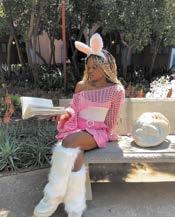
This week we caught them in a pink outfit that was purely a work of art. Big fluffy leg warmers, a cute mini skirt and, yes, bunny ears, all tied together to create an alternative fashion ensemble that is barely seen on campus. The head-turning outfit was balanced with white accents on the belt, and their chunky platform shoes finished off a look that was Pinterest worthy! This ensemble exuded a creative but relaxed energy.
Dina’s beloved show Adventure Time also serves as their inspiration when cultivating outfits. They love the colour palette and accessories worn by the characters and often look for ways to replicate the styles with their own twist. When it comes to shopping, Dina’s best friend is AliExpress. It is the perfect platform for them to find versatile pieces to add to an already unique wardrobe.
Instagram: @killuwaii
then, the genre has gained popularity nationally and is loved by many locals.
Those worthy of applause
“All I need is some love tonight.” Imagine yourself at a concert with one or two friends, one hand holding a cold brandy and mix while the other is scrunched up in a fist and bopping to these iconic lyrics. The song “Love Tonight”, created by the musical duo Shouse, deserves a gold shelf on the electronic dance music wall of fame. Released in 2017, this song introduced many to this genre, and to date it has received an APRA AMCOS Billions Award for achieving over one billion streams.
Of course, the hit single “Summer” by Calvin Harris cannot go unmentioned. Coincidentally released during the summer of 2014, this song should be held accountable for many dirty white sneakers and foot cramps due to endless jumping. Calvin Harris has graced us with many hit singles such as “One Kiss” and “Feels”. These are just two examples of the bangers he continues to deliver. Local names that also
deserve applause for their contribution to the genre include Sun-El Musician, DJ Shimza, Culoe De Song and Da Capo.
Next track
It is time to put your rave shoes on as we enter the world of electronic dance music. Close your eyes and allow yourself to be consumed by the upbeat tempo and rhythm that make this genre stand out among the rest. Remember to dance like no one is watching and listen responsibly, music heads.
• Abiro (Da Capo’s Touch)
– Kato Change, Winyo & Da Capo
• Hey Hey – Dennis Ferrer
• King of Hearts – Kim Petras
• Rinketin – Ajna (BE) & Samm (BE)
• Abandonment Issues – Atmos Blaq & Sio

During times of strife and hardship it is understandable that you would turn to the past in search of forgotten moments of bliss. In search of such moments, you cannot help but indulge in the wonderful collective memory of the 2010 FIFA World Cup. The vivid memories of joy and pride felt by South Africans as it was announced that their country would host the 2010 FIFA World Cup continues to unify South Africa in a way that only football could achieve. The eruption of vuvuzelas as Tshabalala scored the opening goal against Mexico can still be faintly heard in the unlit streets of Soweto. However, over a decade later, South Africans are still being charged for these fond remembrances through taxes and environmental impacts. This calls for a reevaluation of the World Cup legacy in all its true, less blissful glory.
Those with good memories will recall the unified movement of South Africans on 15 May 2004 as they searched for their TV remotes to increase the volume of Sepp Blatter’s melodic announcement of the proud host of the 2010 World Cup. South Africa is granted the Hollywood Pass on a fool’s gold Blatter. The ANC, having just won the general elections that April through questionable campaigning, were quick to identify themselves as the face of the unifying tournament rather than the face of the Oilgate Scandal.
During this time of celebration, the hidden immoral temptations of public officials and private sectors could not weigh down South Africans’ shared hope that the World Cup would bring prosperity to our beloved country. Everyone cheered as the former president Thabo Mbeki promised that the state would ensure the World Cup be remembered as a moment when Africa stood tall and turned the tide of centuries’ of poverty and conflict. It is this characteristic of inherent hopefulness and elation that connects South Africans with the game of football in a way that reveals the undeniable perfection of hosting the World Cup in South Africa. However, immoral temptations are dangerous when acted on and do not seem to occur in isolation.
Eleven years later, South Africans would come to understand the irony of Mbeki’s speech. A corruption case conducted by the United States Department of Justice found that South Africa had paid $10 million to FIFA in bribes to secure the right to host the World Cup. Nine years had passed since Mbeki had declared that the World Cup would mark South Africa’s progress away from poverty and conflict. During those nine years, Mbeki resigned from office due to allegations of interfering in the corruption case against former president Jacob Zuma, and South Africa’s poverty rate increased to 60%. The memories of laughing crowds and the humming of “Waka Waka” began to fade as the preliminary unrestful roars of the #FeesMustFall movement began to make their way into the streets of South Africa.
The knowledge that South Africa would be the proud host of the World Cup left South Africans shivering with anticipation for all the opportunities such an event would bring. While individuals hustled to afford tickets and made plans with their loved ones to join them in watching their favourite teams play, it was up to the government to ensure that South Africa would be ready for the big day.
The government ultimately spent more than R30 billion in preparation for hosting the first FIFA World Cup held on African soil. In 2004, the FIFA Inspection Group suggested that three existing stadiums were suitable to host the World Cup and that five existing stadiums would have to undergo renovations. South Africa chose to ignore these findings, instead choosing to construct five new stadiums and renovate one existing one. There seems to be no reasonable explanation for this choice, the government acting like a toddler who chooses to wear a new Halloween costume even though their one from last year remains in perfect condition, unused in their drawer. However, in the case of the World Cup, using last year’s Halloween costume would have saved the South Africans R1.1 billion. Of the five stadiums set to be constructed and completed by 2009, only the Royal Bafokeng Stadium was to be privately funded and privately owned.
In 2006, the plan was set in motion as construction of the Moses Mabhida Stadium began in Durban. This stadium met its goal of completion by 2009, with the total cost amounting to R3.4 billion. In 2007, construction began on the Mbombela Stadium, the Peter Mokaba Stadium, and the Cape Town Stadium, all within three months. The total costs for each stadium varied considerably; while the Mbombela Stadium cost R140 million in total and the Peter Mokaba Stadium cost R1.2 billion, the Cape Town stadium surpassed both with a total cost of R4.5 billion.
While these stadiums seem to have nothing in common, they share one common feature not physically detectable by the naked eye: their foundations have been soiled by corruption.
Four years after their completion, during June of 2013, these crooked foundations would be uncovered when 15 construction companies agreed to pay fines for the collusive tendering of the stadiums’ construction. These companies paid a collective R1.46 billion for rigging the tenders by artificially inflating building costs for all the World Cup stadiums – an amount that has yet to be fully paid.
These twists and turns took place behind closed doors, away from the innocently ambitious eyes of the South African citizens playing football at their local clubs and taking out bank loans for their brilliant business plans linked to the World Cup. South Africans might not have skipped to the bank had they known that they would be financially burdened due to the amendment of several revenue laws, allowing for the generous tax breaks given to FIFA. If citizens were aware that on 7 June 2010, Bheki Cele approved the R47 million budget for SAPS accommodation during the World Cup, they might have invested in hotels rather than their own goals.
It seemed that even before the 2010 World Cup had commenced, the South African government and the various private sectors involved in preparations were patting each other on the back for a job well done. The idea that the World Cup would prove to be an economic loss seemed unimaginable. Due to the nature of South Africa, particularly the vibrant liveliness of its citizens, the 2010 FIFA World Cup was on track for such social success that it would be fixed in both South African and football history for centuries. The World Cup took place from 11 June to 11 July. All South Africans needed was one month to make the 2010 World Cup the fourth most attended World Cup in history. On 11 July 2010, Spain emerged as the victors, breaking their world cup duck during the first World Cup on African soil. A decade has passed since then, and South Africans cannot help but wonder in which stadium all the prosperity and success that the government spoke of is hiding. What has South Africa gained from 13 years of babysitting FIFA’s one-month stands?

with this, securing Athlone would lead to various socio-economic improvements for this impoverished area, as funding would be allocated to roads, transport, and hotels. This made FIFA’s insistent rejection of the Athlone Stadium heartbreaking.
The World Cup held several positive outcomes, such as the revamped roads, street lights, new parks, clean streets, and developed infrastructure and transport. However, the challenge posed by the World Cup is the maintenance of such outcomes. South Africans have grudgingly covered exorbitant maintenance costs and losses through generously forced taxes. SARS’s statement that the event was not a profit-making exercise seems detached from the reality of South Africa’s tax usage and FIFA’s $631 million surplus.
Between 2010 and 2015, the Moses Mabhida Stadium required R2 million in maintenance costs every month. This stadium became the municipality’s responsibility in 2013, making a loss of R34.6 million that year alone. While reports reflect successful usage of the Mabhida Stadium as the venue for football games, concerts and even bungee jumping, tales of undisclosed employees reveal a different story. With annual maintenance costs of around R80 million, identical to those of Nelson Mandela Bay Stadium, employees and residents report being evicted from the stadium due to cracked infrastructure, poor design with weakening pressure points and uninhabitable living conditions. The State’s FIFA dream of shooting for the stars is best reflected by Mabhida’s Sky Car, which has been broken since 2017.
The most controversial of FIFA and South Africa’s one-month stands is the Cape Town Stadium, holding similar characteristics to a burnt-out child prodigy. This stadium embodies what a state will do in the name of fame rather than community development and sustainability. Before settling on Green Point Common as the
Instead, FIFA preferred the construction of a heavenly white elephant mystically overlooking Table Mountain, forcefully excluding the Cape Flats. This construction was approved because of the then minister’s agreement with Stade de France, a French company that managed some of the top international stadiums, to operate the stadium for 30 years after the World Cup. However, shortly after the World Cup final, Stade de France backed out of this agreement, stating that their shareholders refused to support the “projected substantial losses” of the Cape Town Stadium. This French revelation led to South Africans picking up the tax, attempting to cover an annual loss of R55.1 million. Not to mention the 227 124 litres of weekly watering that is required to maintain a grass field such as Greenpoint Stadium.
Tax expenditure is not the only consequence that South Africans continue to experience. While the sunlight continues to touch the stadiums on their glistening mountains, South Africans remain in the dark. During preparations for the World Cup, Eskom spent R84 million in energy generation, transmission, and distribution. However, former Eskom chief Tshediso Matona stated that the increase in loadshedding over the past years is partly due to the strain on the national grid, causing a backlog in maintenance due to providing power during the World Cup and national elections. Although Pravin Gordhan reported that the World Cup added 0.4% to national economic growth (roughly R38 billion that year), this does not make for a sustainable project. A decade after the World Cup, South Africa’s gross domestic product growth decreased from 3.4% to 0.153%. Additionally, inflation increased from 4.0% to 4.2%, and government debt increased from 34.7% to 62.23%.
The 2010 FIFA World Cup remains a historic event, responsible for the creation of millions of beautiful and unifying memories for South Africans. However, the costs of maintaining these memories through tusked monuments and financial expenditure leads you to ask: at what cost should you externally preserve a memory?
Is a unifying memory better than unifying infrastructure and sustainable development? What does it mean when a state provides more financial protection to these concrete white elephants than the living African elephant?



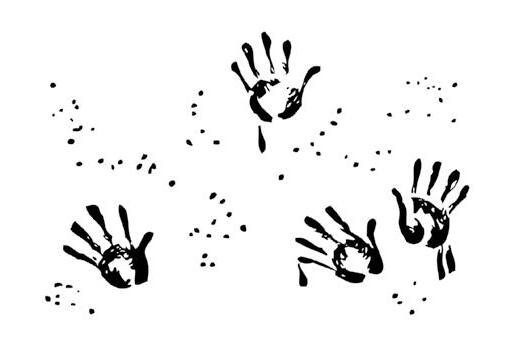
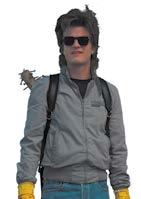

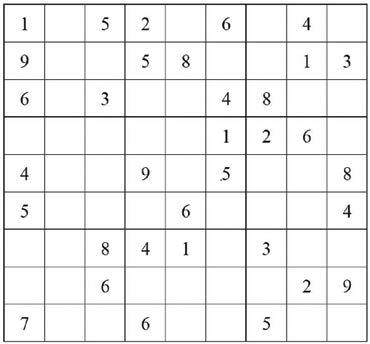

3. Inspector with a knack for finding the
5. The more of this there is, the less you
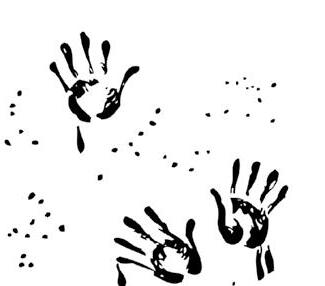
6. Michael Jackson’s song “Smooth ___”
8. What can you break, even if you never
10. Solve the anagram for this fictional detective: DRY NEW CAN
12. Anthony Hopkins’s character in Silence of the Lambs
14. Famous murder mystery author who wrote Murder on the Orient Express
16. Sherlock’s nemesis

1. Find an answer to a problem
2. Most popular police dog breed
4. Claim or evidence that proves you were absent when the crime took place
7. Film about Sherlock’s sister, played by Millie Bobby Brown
9. Synonym for confidential
11. Character whose martini should be “shaken, not stirred”
13. Stereotypically, the ___ did it.
14. Fake or assumed identity
15. Police chief in Stranger Things
Vox is found dead in his apartment, shot in the back. His nemesis, Alastor, is arrested for the murder after he confesses to the crime. When Detective Charlie interviews him, he tells her: “He stole all the radios in the city so that no one could listen to my broadcasts.This would not do. So, I went to his place, looked him straight in those flat eyes and pulled the trigger.” The detective realised he was lying about his involvement and let him go.
How did she know?



ROSA DIAZ
SCOOBY DOO
SHERLOCK SOLVE SUSPECT TRAP VELMA WATSON WEDNESDAY WITNESS YAGAMI
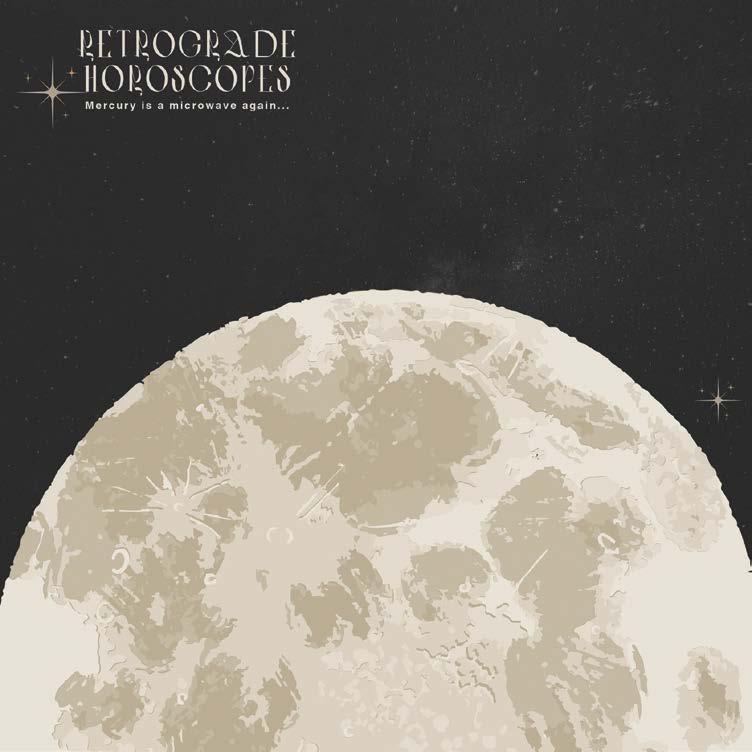
Capricorn (December 22 - January 19):
This should be a time of reevaluation in your life. Think about all of the terrible things you have done (long list, I know) and then issue a few apologies.
Aquarius (January 20 - February 18):
Is it really a quarter life crisis if you have one every 4 to 8 months? Just buy a fidget toy and start dealing with your emotions already.
Pisces (February 19 - March 20):
Does your partner know that you are single? It is time to pull them for a chat and discuss what you really are as opposed to what you have made them believe.
Aries (March 21 - April 19):
Do you see Steve Harvey anywhere? No? Ok, so stop family feuding all the flipping time. Remember, moving out is an option (your family needs some peace fr).
Taurus (April 20 - May 20):
During this time, let’s try communication on for size. No one will know how you feel if you don’t talk to them about it. Despite what you may think, people cannot read your mind.
“you can’t blame yourself, you just have to blame Mercury, ‘cause it’s just hella in retrograde”
- Mother Swift
Gemini (May 21 - June 20):
Stop passing off the videos you watched on TikTok as actual information. You are not well read, you are just annoying.
Cancer (June 21 - July 22):
You will have many misunderstandings coming your way, but do not make it anyone else’s problem (like everything else you do).
Leo (July 23 - August 22):
We all know you think you’re royalty, but that doesn’t mean you deserve to be chauffeured around all the time. Go get your driver’s licence, damn it!
Virgo (August 23 - September 22):
Quitting looks good on you.
Libra (September 23 - October 22):
Someone might come back and offer an apology or even break no-contact. Do not fall for it, surely you know better by now (right??)
Scorpio (October 23 - November 21):
Do you feel like everyone has an issue with you suddenly? Maybe the call is coming from inside the house, my friend. RING b*tch!
Sagittarius (November 22 - December 21):
Do not message your ex or even be tempted to search for them on social media. Miss Girl, Mercury is in retrograde, so no decisions that you make right now will be good (not that any of them ever are). No delusions during this time, it was not better back then.
AmaTuks have become the Cinderella story of the Nedbank Cup, truly embodying a real life tale of underdogs defying all the odds. Their journey to the top eight is one filled with twists, turns, and moments of pure drama that have captured the imagination of fans across the country.
Undeterred, AmaTuks took to the field with a steely determination to overcome whatever obstacles stood in their way. In a thrilling display of skill and resolve, they emerged triumphant once again, edging out their opponents with a narrow 2-1 victory.
In the preliminary round, AmaTuks faced off against Venda in a match that would set the tone for their campaign. In a heartstopping encounter that went down to the wire, it was AmaTuks who emerged victorious, triumphing over Venda in a tense 10-9 penalty shootout. The odds were stacked against them, but they refused to back down, giving their all until the final whistle blew Their victory sent shockwaves through the competition, signalling their intent to be taken seriously as contenders.
Cheered by their success, AmaTuks marched confidently into the round of 32, where they squared off against Cape Town Spurs. Spurs, who had an intimidating lineup, were expected to provide a stern test for AmaTuks. However, the underdogs rose to the occasion, delivering a masterclass in determination and resilience. In front of their passionate supporters at Tuks Stadium, AmaTuks put on a show, dominating proceedings from start to finish. A solitary goal was all it took to secure victory for AmaTuks, leaving their fans in raptures and Spurs stunned.
In spite of this, AmaTuks’ journey was far from over. Their next challenge came in the form of Moroka Swallows, a team with a storied history and a reputation for producing some of the finest talent in the country. The stage was set for a classic showdown, with both teams eager to book their place in the quarterfinals. However, fate had other plans, as loadshedding plunged Tuks Stadium into darkness on the night of 13 March.
As the dust settled on their victory over Swallows, AmaTuks found themselves on the cusp of greatness, a mere two matches from Nedbank Cup glory. Mamelodi Sundowns stood between them and the semi-finals - their toughest challenge yet. The quarter final was a drawn-out game where Sundowns opened the match in the eighth minute of play and dominated possession. In the end, a goal from AmaTuks brought it down to a penalty shootout where AmaTuks lost 3-4 to the Brazilians. A valiant effort from our boys who showed themselves a force to be reckoned with despite the results.

When it comes to the world of cinema, the sports genre has always had a special place. Over the years, sports films have captivated audiences with fundamental themes such as perseverance, triumph and the power of the human spirit. Often, these films draw inspiration from the lives of real-life athletes, blending reality and dramatisation. This often leads to films with great emotional depth which move the viewer.
One of the most iconic sports films of all time is Rocky (1976), written by and starring Sylvester Stallone. Inspired by the rags-to-riches story of boxer Chuck Wepner, Stallone crafted a narrative that resonated with audiences worldwide. While Rocky captured the essence of Wepner’s underdog journey and his improbable shot at the heavyweight title, some details were added for dramatic effect. It is also reported that Wepner never got paid from the success of the film. Nevertheless, Wepner himself acknowledged the film’s impact and its reflection on certain aspects of his life and career.
In recent years, sports biopics have continued to captivate audiences, offering glimpses into the lives of legendary athletes across various disciplines. The Blind Side (2009), based on the true story of NFL player Michael Oher, explores themes of family, perseverance and the transformative power of kindness.
While the film received critical acclaim, some critics pointed out discrepancies between the movie and Oher’s actual experiences, particularly regarding the portrayal of his relationship with the Tuohy family. The movie depicted that Oher was illegally adopted by the Tuohy family and that he never enjoyed his own success, which was later revealed by Oher to be a lie. Although the Tuohys have denied these allegations, the film’s legacy has been painted with these revelations.
Invictus (2009), directed by Clint Eastwood, starring Morgan Freeman as Nelson Mandela and Matt Damon as rugby player Francois Pienaar, chronicled Mandela’s efforts to unite post-apartheid South Africa through the country’s rugby team. The film depicted the lead-up to the 1995 Rugby World Cup and the team’s journey to victory, highlighting the role of sports in fostering reconciliation and national pride. While some elements in this film are fictionalised, it remains faithful to the overarching narrative of Mandela’s vision for a unified nation. Although the film is a Hollywood product, it tells a South African story that built a rainbow nation through the power of sport.
The world has not seen the end of big up-and-coming athletes who are still breaking records and thriving in their respective fields, with many opportunities to portray these stories on the silver screen.

Sandisiwe
MsibiMany are unaware of its existence, but UP has a sailing club called TuksYachting. Despite its somewhat hidden status, this club is undoubtedly worth exploring for those seeking adventure and camaraderie.
TuksYachting is based at the Pretoria Sailing Club (PSC) on the shore of the Rietvlei Dam, 15 minutes from Hatfield. PSC is home to an array of dinghies (one to two person boats) that the club uses to sail. The club prides itself on fostering a fun and safe learning environment where members can gain confidence in handling boats. Through a blend of theoretical instruction and hands-on experience as crew or skipper, the club equips members with the skills needed to navigate the open waters.
Every December, TuksYachting sets its sights on the University Sport South Africa (USSA) competition. With aspirations of building an intimidating team, the club is determined to leave its mark on the competition, representing UP with pride and skill.
While sailing is at the heart of TuksYachting, the club also boasts a vibrant social calendar filled with pub crawls, braais and quiz nights. Members leave their overalls and join in spirited renditions of club songs, welcoming all to partake in the festivities. With social events regularly advertised on social media, there is no shortage of opportunities to connect and unwind with fellow enthusiasts. The club also embarks on excursions to the Vaal River for weekend regattas to showcase their sailing skills.
TuksYachting offers a diverse range of activities, from competitive regattas to laid-back learning weekends and a warm, inclusive social atmosphere. Whether you are a seasoned sailor or a complete novice, there is something for everyone. Providing a blend of adventure, skill-building and fellowship, this club is a hidden gem worth exploring for students seeking an unforgettable university experience. If you are interested in joining the club, you can contact Letladi Lekolwane, the club manager, at letladi. lekolwane@up.ac.za, or send them a direct message on Instagram @tuksyachting.


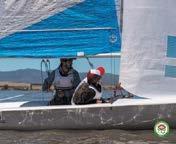

Micaela Wathen
very Tuesday in March, the fields behind Rembrandt Hall on Hillcrest’s sports campus were dotted with athletes, from residences to day houses, faculty houses to societies. They all came together for the single purpose of playing American-style football with a flat disc; also known as a frisbee.

Ultimate Frisbee, an official sport housed in TuksSport that is also recognised by the International Olympic Committee, is gaining great exposure amongst the students of UP. The management team behind Ultimate Frisbee at the university, in collaboration with the Student Sport Committee, hosted both matches and training sessions to give students a taste of the skill and competition one can experience in this growing sport. The training sessions led by the Tuks Thunderbirds, UP’s official Ultimate Frisbee team, took place every Tuesday, Thursday and
Friday from 18:00 to 20:00 at the field behind Rembrandt Hall. The turnout for these events reflected the keen interest of students who were willing to learn and hungry to win the March league.
So, how does it work?
Well, Ultimate Frisbee is a 7-a-side no-contact sport that resembles a mix between American football and netball. It is also one of the only sports that is self-officiated. That’s right – no referees! Just good old honour, integrity and sportsmanship from the players themselves. The objective of the game is to move the frisbee from your team’s side of the football-sized field (as in Premier league, PSL, UEFA – you know, the real football) to the opposition's side. A team scores points by catching the disc in the opposition's end zone and then play resets. The sport is most commonly played in mixed teams, which in the case of this year’s league, afforded many of the RAG partnerships a lekker couples’ activity to build more cohesion before RAG Sports.
The Ultimate Frisbee league played this March consisted of three rounds, taking place each Tuesday. Unfortunately, the first round rained out due to a heavy storm. However, these damp conditions did not dampen the spirits of the players who pitched for the remaining Tuesdays with their game faces on. Ultimately, the league was filled with down-the-line dashes, nimble fingers making catches in the end zone and tons of fun and spirit! The results of the mixed and men’s teams for the league were as follows:
Mixed Teams Results
1. OP Village
2. Morula Legae x House Khutso x Commercii
3. Medley 2
4. Erica x Mopane 2
5. House Ukuthula x House Mags
6. Medley 1
7. Blossoms Delight x Vividus
8. Erica x Mopane 1
9. House Tau x Madelief
10. House Tau x Vividus
Men’s Teams Results
1. The Tower
2. Blossoms Delight
3. Dregeana
4. Mopane



ICongratulations to the winners of the internal league and a major shoutout to the Ultimate Frisbee management team for all the effort they have put into growing this sport! PDBY looks forward to seeing more fun and major growth of Ultimate Frisbee.
n the realm of sports, rivalries ignite passion, fuel competition and captivate audiences worldwide. It gets so serious that some fans even give themselves nicknames to identify with particular sides of the rivalry. From the thunderous clashes between teams, to the intense duels among individuals, these epic battles transcend mere competition. They becomelegends etched in the ultimate books of sporting history. Let us delve into some of the most famous rivalries that have enthralled fans for generations.
TEAM RIVALRIES:
1. Real Madrid vs Barcelona (Football/Soccer):
The El Clásico between Real Madrid and Barcelona is not just a football match; it is a cultural phenomenon. Dating back to the 20th century, this rivalry epitomises the fierce competition between two of the most successful clubs in the world. With star-studded line-ups and a history of contentious encounters, El Clásico consistently delivers drama and spectacle to its fans. As these teams represent two of the biggest cities in Spain (Barcelona and Madrid), a battle of the cities is unavoidable.
2. New Zealand All Blacks vs Springboks (Rugby):
The rivalry between the All Blacks and the Springboks is one of the most fiercely contested in the Rugby Union. With a history dating back over a century, these rugby powerhouses consistently produce epic battles on the field, showcasing the physicality and skill of the sport. They are usually the main two teams that new rugby fans want to familiarise themselves with. Although the rivalry is noticeable on the field, both teams have consistently expressed their brotherhood as soon as they leave the pitch.
3. India vs Pakistan (Cricket):
In cricket, few rivalries match the intensity of India vs Pakistan matches. With a long history of political tension and cultural significance, cricket matches between these two nations transcend sport, captivating millions of fans across the globe. Most of the time, tickets to their matches sell out within minutes. The rivalry goes so far that even the governments are getting involved, which meddles with how tournaments are hosted between these two nations. Whether it is a series match or a World Cup fixture, this rivalry is always anticipated by most cricket lovers.
4. Los Angeles Lakers vs Boston Celtics (Basketball):
The Lakers-Celtics rivalry is synonymous with NBA greatness. With a combined total of 34 out of 76 NBA championships between them, these two franchises have dominated the basketball
landscape for decades. From the Magic-Bird era to the KobeGarnett battles, Lakers vs Celtics matchups are etched in the memory of basketball fans worldwide.
1. Lionel Messi vs Cristiano Ronaldo (Football/Soccer):
The rivalry between Messi and Ronaldo is one of the most iconic in modern football. It is so great that even non-football fans are familiar with it. With both players consistently vying for the title of the world’s best, their individual battles on the field have captivated football fans around the world for over a decade.
2. Muhammad Ali vs Joe Frazier (Boxing):
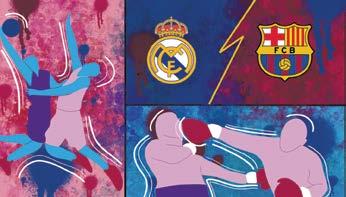
In the boxing world, few rivalries match the intensity of Ali vs Frazier. Dubbed the “Fight of the Century”, their trilogy of bouts captivated the world, which showcased not only their athletic ability but also the cultural and social significance of their rivalry.
3. Virat Kohli vs Babar Azam (Cricket):
With the intense battle between India and Pakistan, the battle of the captains was also bound to be born. With both of them no longer captains in all formats of the sport, the 2020 – 2023 season saw one of the most serious captain comparisons between these skippers.
Although teams naturally compete against each other, having specific rivalries based on certain factors such as: battles of cities, politics, and similar skill levels keep fans stimulated. Based on social media engagements, it is clear that some of them tend to take these rivalries very personally. So, students of UP, tell us … where do your loyalties lie?
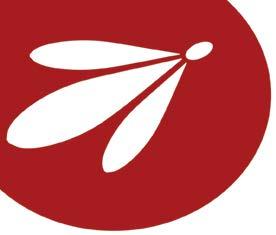
The internal sports scene of the first quarter was unconventional for the students and the campus of UP. The kick starters in the sporto-sphere were postponed due to the striking action and inclement weather, which left the Rag Farm and Hillcrest Campus bare for the first weeks in February (save the male residences who were online and on-campus). These delays may have also kept the wider UP community out of the loop on the triumphs and losses that occurred when campus returned to normal. So, PDBY has captured the quarter 1 results for the tournaments and internal leagues to give you the 411 on which of your favourite residences, faculty houses, day houses and societies are ahead of the 2024 game.
As mentioned before, Rag of Hope Day has been postponed to quarter 2 and will take place on 4 May. Students can look forward to goal ball, touch rugby and their HCs or ECs getting down and dirty in tug of war at the iconic Give Back Market Day. Until then, results are pending. Who are your favourites to win Rag Sports?
Despite the delay of Rag Sports, firstyears still received exposure to UP’s vibrant
student life via the first-year tournaments hosted by Student Sport. These tournaments create opportunities for bonding, building up a structured team and spurring on that competitive spirit which will drive the rest of the sport season. Below are the results for the first-year tournaments that took place:
First-Year Ladies’ Tag Rugby Tournament – 21 February
1. House Mags 2. House Khutso 3. Respublica Hatfield Square
First-Year Valentine’s Basketball Tournament – 5 March Winning team for Ladies’: Nerina Winning team for Men’s: Mopane
First-Year Football Tournament
– 16 March Men’s

The first-years were not the only sporty students breaking a sweat, as the senior students were locked and loaded for the internal leagues. In quarter 1, Student Sport commenced several of their internal sporting leagues. This included cricket, squash, badminton and the first rounds of rugby. The cricket and rugby leagues are ongoing, but the results for the squash and badminton are as follows:
Squash Group Winners Men’s Group 1 – OP Village
Group 2 – College
Group 3 – Tower 2
Group 4 – Blossoms Delight 2
Group 5 – House Tau 2
Neo Paledi
In a move that has sent ripples of excitement through the world of netball in South Africa, Jenny van Dyk has been appointed as the new head coach of the #SparProteas, the South African national netball team. With such an illustrious career as both a player and a coach, Van Dyk brings a wealth of experience and a winning mentality to her new role, igniting hopes for a golden era in South African netball.
PDBY had the opportunity to sit down with Van Dyk as she shared her overall thoughts and feelings regarding when she found out about her newest milestone. “The first thought was ‘Oh my goodness, be careful what you wish for, ’cause it might come true!’... It immediately excited me, but I [also] just got filled with this great sense of responsibility,” said Van Dyk.
Van Dyk's appointment marked a significant moment for the #SparProteas, who have long been striving for greatness on the international stage. Her impressive résumé includes coaching stints with top clubs such as TuksNetball and Gauteng Jaguars, and it has even been reported that Netball South Africa has not set a mandate for her. This raises the question of whether this would make it easier for Van Dyk to apply her coaching principles without feeling too much
pressure. “The pressure we put on ourselves is enough... I spoke to our internal team, and I said, ‘The most pressure we'll feel is not from the people out there, it's not from the president, it's not from World Netball, it's not from the team, it's from what we've put on ourselves.”
The #SparProteas are currently ranked as the fifth best team on the World Netball rankings. With this impressive feat in mind, PDBY asked Van Dyk about the possible challenges she has identified in the team. She explained that the South African team has not played enough games against other African nations. This should be addressed to “give [these teams] the necessary respect” and to ensure that the #SparProteas are familiar with how they play. Although rankings are also important, Van Dyk expressed the importance of focusing on the scoreboard before looking at the rankings. “Once we start winning, the ranking will improve by itself.”
For South African netball, Van Dyk represents more than just a coach – she embodies the spirit of perseverance and excellence that defines the #SparProteas. Her journey from a young girl with a dream to a trailblazing coach is a testament to the power of determination and hard work. The main insight she will bring to the team is discipline. “Once you have a disciplined
approach, it really makes a difference because it's not about the emotion, it's about the action.”
Under Van Dyk's guidance, the #SparProteas are poised to reach new heights on the global stage. With her strategic acumen and commitment to player development, she aims to mould the team into a formidable force capable of challenging the world's best, especially during the upcoming Commonwealth Games and the Netball World Cup. “To me, getting [to] the podium is obviously our first goal,” Van Dyk declared with unwavering confidence. “If we can push and everybody works towards it with the same urgency and intensity, then we'll definitely go for it... Once we can get our minds around doing the hard stuff, it becomes a reality, and it becomes possible.”
Ladies’ Group 1 – Curelitzia Group 2 – Erica 2
Group 3 – House Khutso
Badminton Winners
Men’s Winners – Blossoms Delight Runners up – House Ukuthula
Ladies’ Winners – House Nerina Runners up – House Erica
From the above results, there is no clear standout on the sports field yet. However, we must give a congratulations to those structures with a few wins under their belts already. All of UP’s student structures – whether residences, day houses or faculty houses –have their game faces on and are in it to win it this 2024 season. At the start of quarter 2, many leagues across various sporting codes are already underway, and there are two major sporting events on the calendar: Rag Sports and UPlympics. Who will emerge victorious? Which structures will take the cup? We will just have to wait and see what more 2024 has in store.
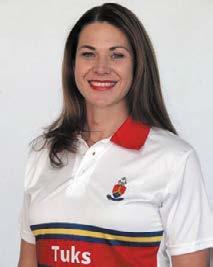
attitude and willingness to work hard [because] if you work hard, it will happen.”
Van Dyk had a few words for young girls in the UP community who would like to see themselves following in her footsteps as one of South Africa's netball coaching geniuses. “I think that growth might be something that every single student at Tuks [should have] – it's an important part of who you are... It's more about your
Fans and observers alike are eagerly anticipating the Van Dyk era, hopeful that her leadership will usher in a new period of success for South African netball. As the #SparProteas embark on this exciting chapter, one thing is certain: with Jenny van Dyk at the helm, the future has never looked brighter for the team.
Micaela Wathen
30 000 people read the print version of To advertise email
carel.willemse@up.ac.za
visit www.pdby.co.za for ad rates